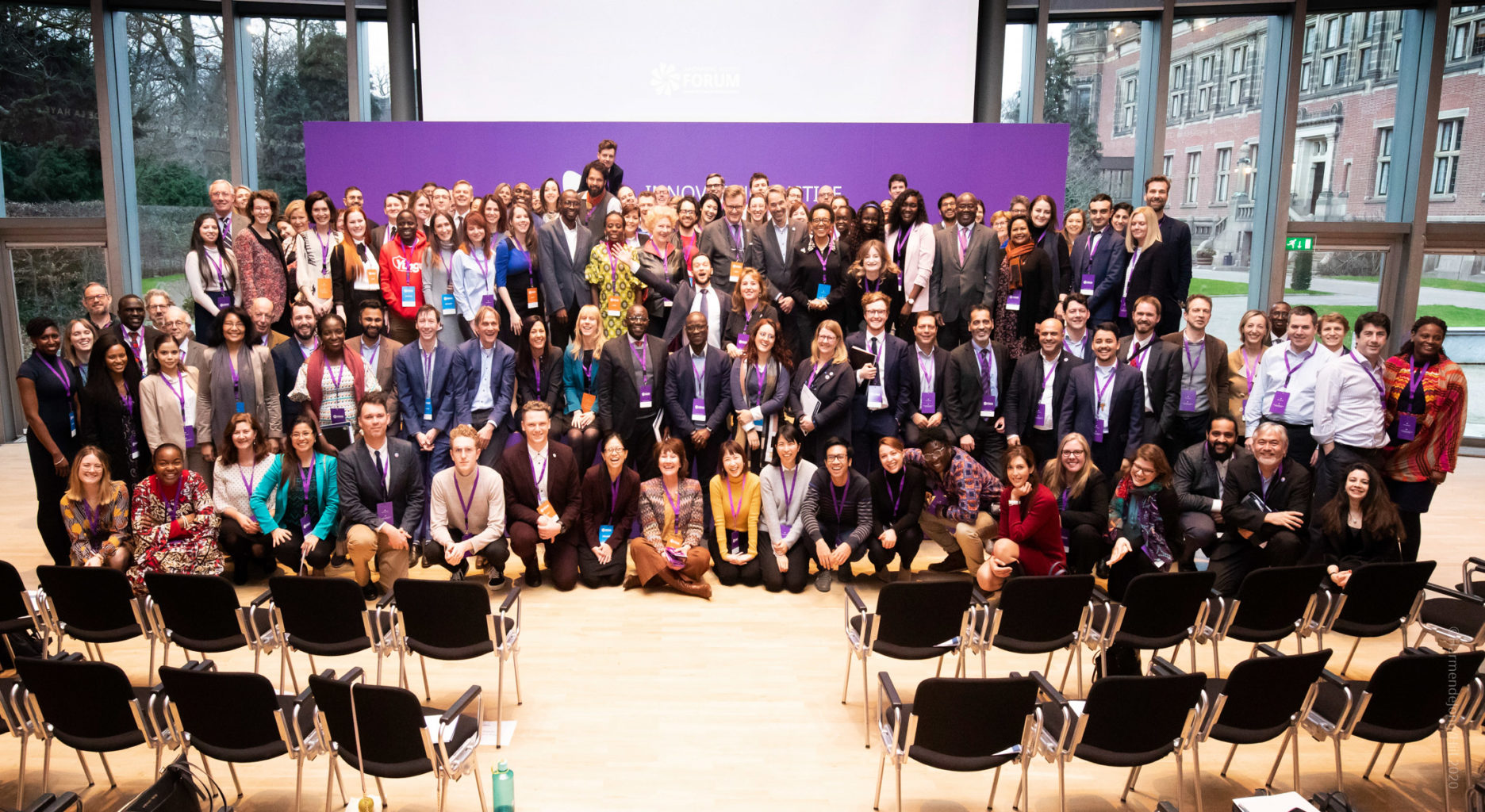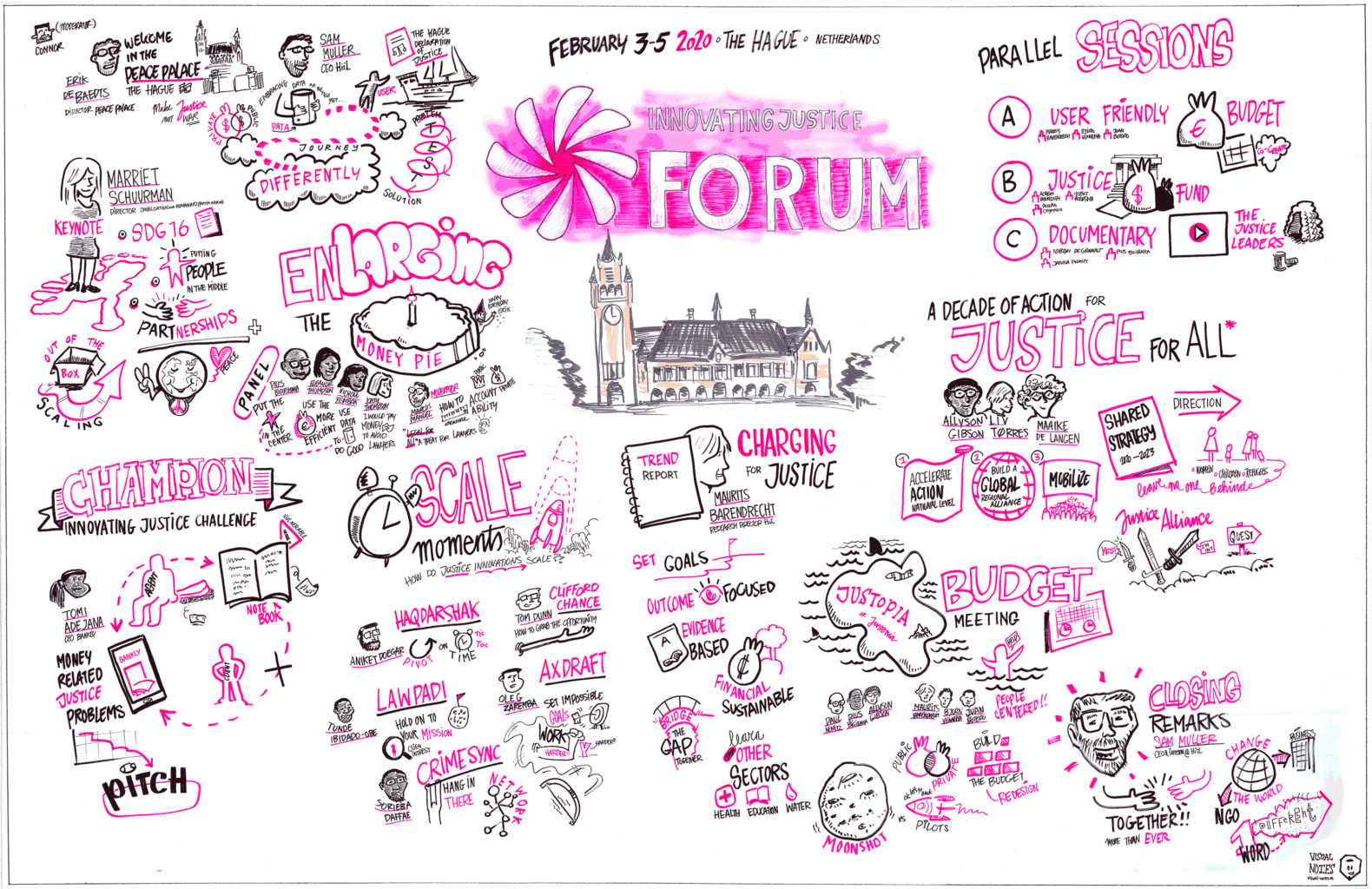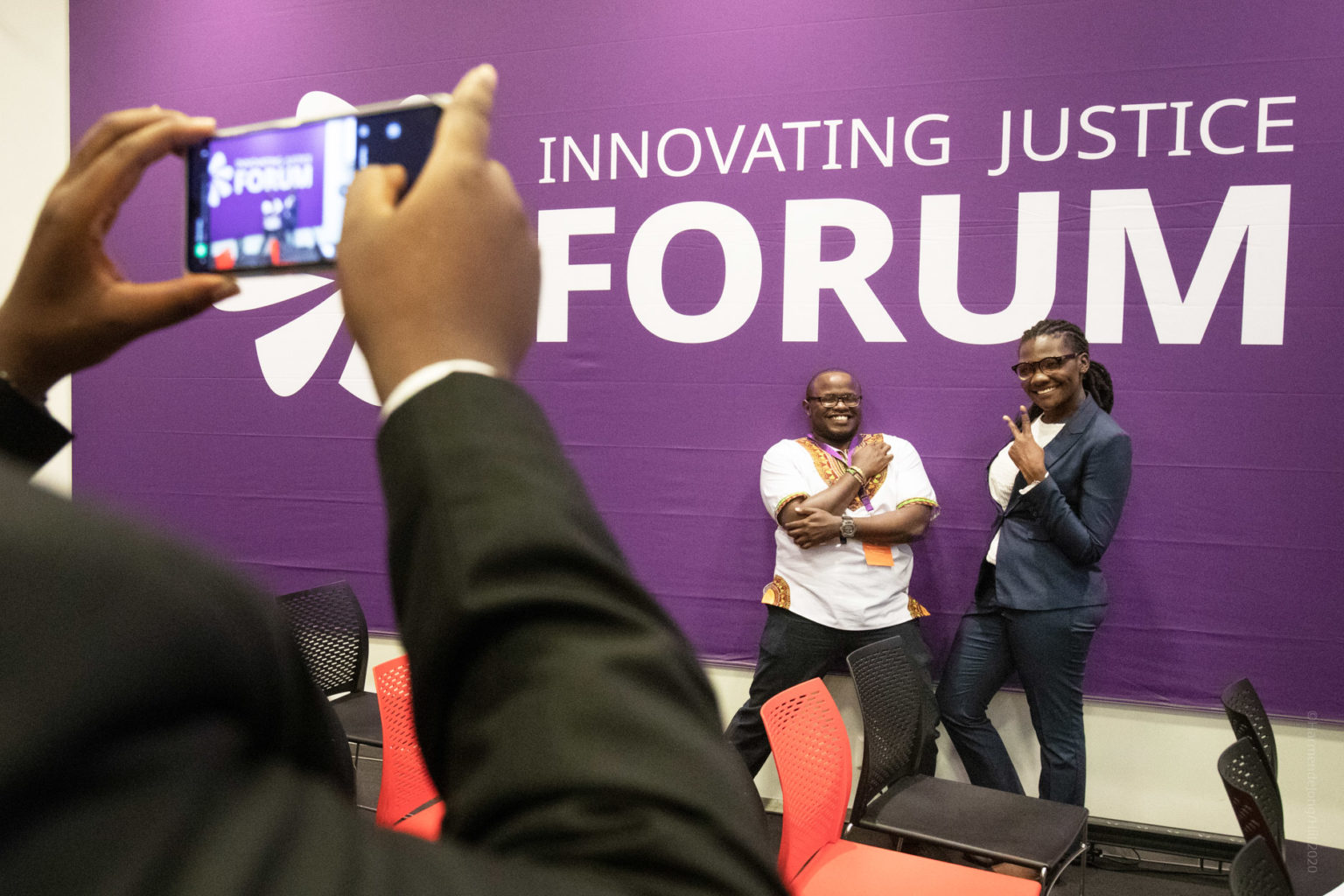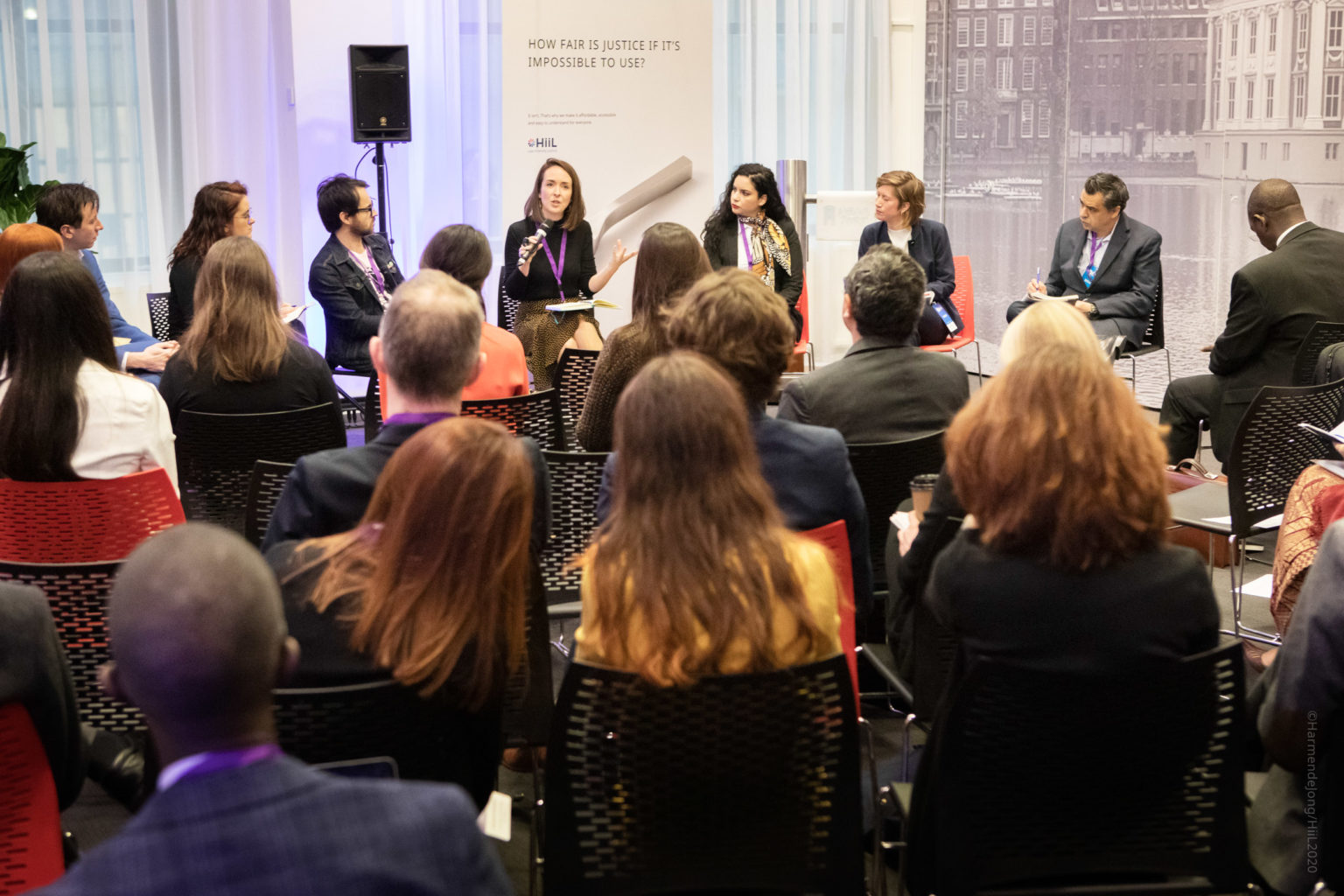This article is a wrap up of the 2020 Innovating Justice Forum.
At a glance: We are so grateful to Wytze Veenstra @Visual Notes who did this superb visual recording of the event.
The Innovating Justice Forum is known across the world as being both a fun and prestigious justice event. This year, as you will see below, lived up to those expectations. Exceeded them, even, on account of having an additional 1.5 days in the programme!
For the tenth annual Innovating Justice Forum since we started with this beautiful and unique event, HiiL dedicated our programme to address a critical blockage for actors worldwide changing the status quo. Financing justice innovation.
How to finance SDG16.3?
The world set an ambitious target in 2015: that by 2030, every person should enjoy equal access to justice (United Nations sustainable development goal 16.3). Reliable research estimates the justice gap as two thirds of the global population. That is quite something. Unfortunately, there was no attachment to the momentous justice target on how to finance it.
Day 1: turn up the pressure and find a recipe to finance justice for all
Assembly of SDG16.3 stakeholders
Many stakeholders are affected by and interested in unlocking the bottlenecks in financing universal justice care. The convening of regulators, court workers and lawyers, innovators, the public sector and social impact investors is a unique opportunity to explore focussed topics. The formula: Break down a momentous challenge into smaller pieces and work in sprint teams.
On day one we held five ¨pressure cooker sessions¨ related to financing justice to drive at context-appropriate financial models. These five sessions repeated twice in the course of the day:
- Explore the best innovations and ways to increase revenues
- From stalemate to co-create: stretch your collaboration to optimise financing justice for all
- Getting the most bang for your buck
- Define measurable outcomes to make the case for investment
- Potential of public/private partnerships to finance access to justice
The moderators of these sessions took stock of a wide variety of experiences and knowledge from the justice field. Real-talking and alchemy took the broad diversity of viewpoints and knowledge and turned them into a clear vision.
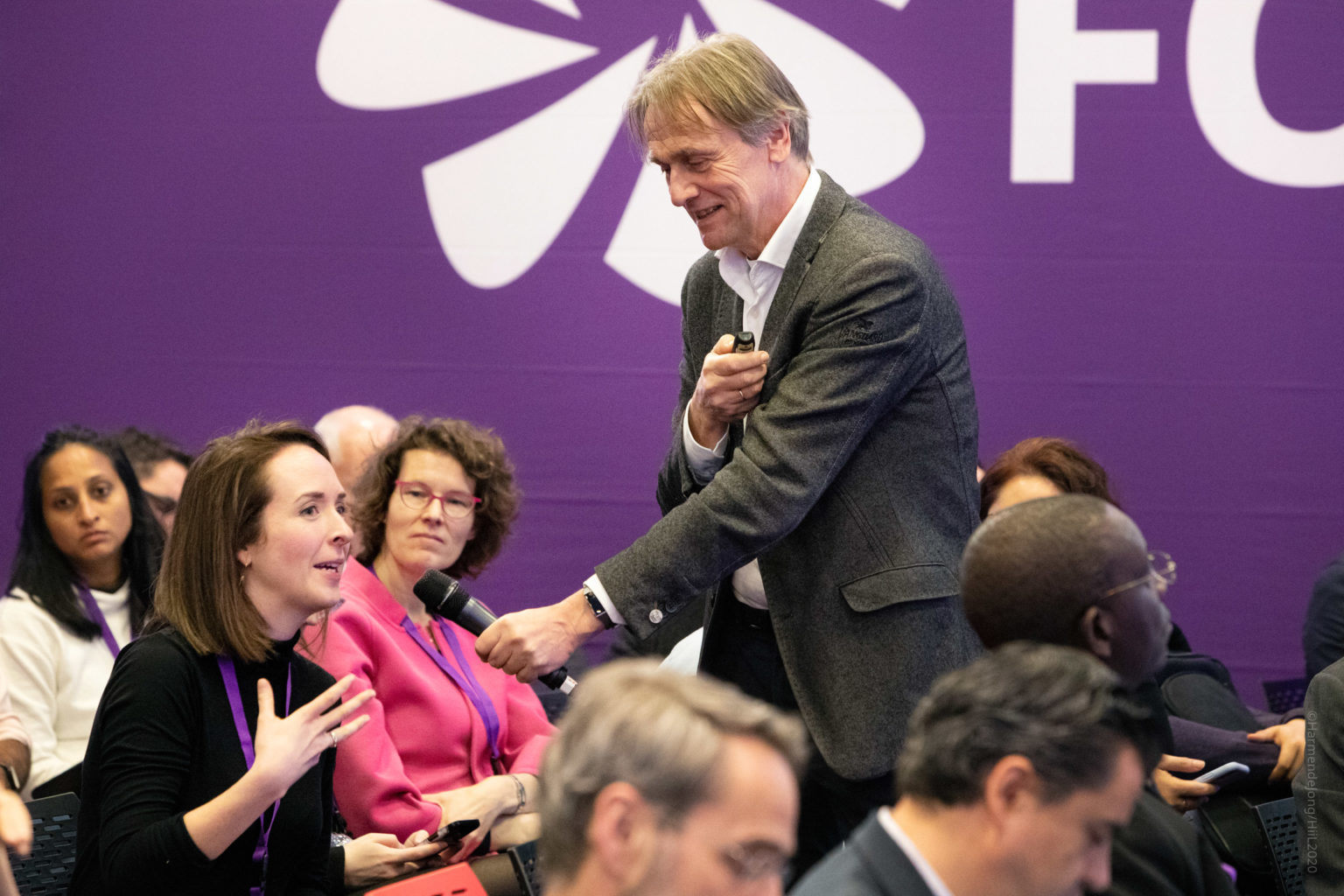
Financing access to justice work sprint outcomes
The participants and moderators were engaged which led to successful outcomes. IJF participants did not seem to mind in the least being invited to tackle head-on difficult questions. Far from it: there was an ambience of cheerfulness and energy. For the conclusions of these pressure cooker sessions, you can visit a summary report, I co-wrote with my team.
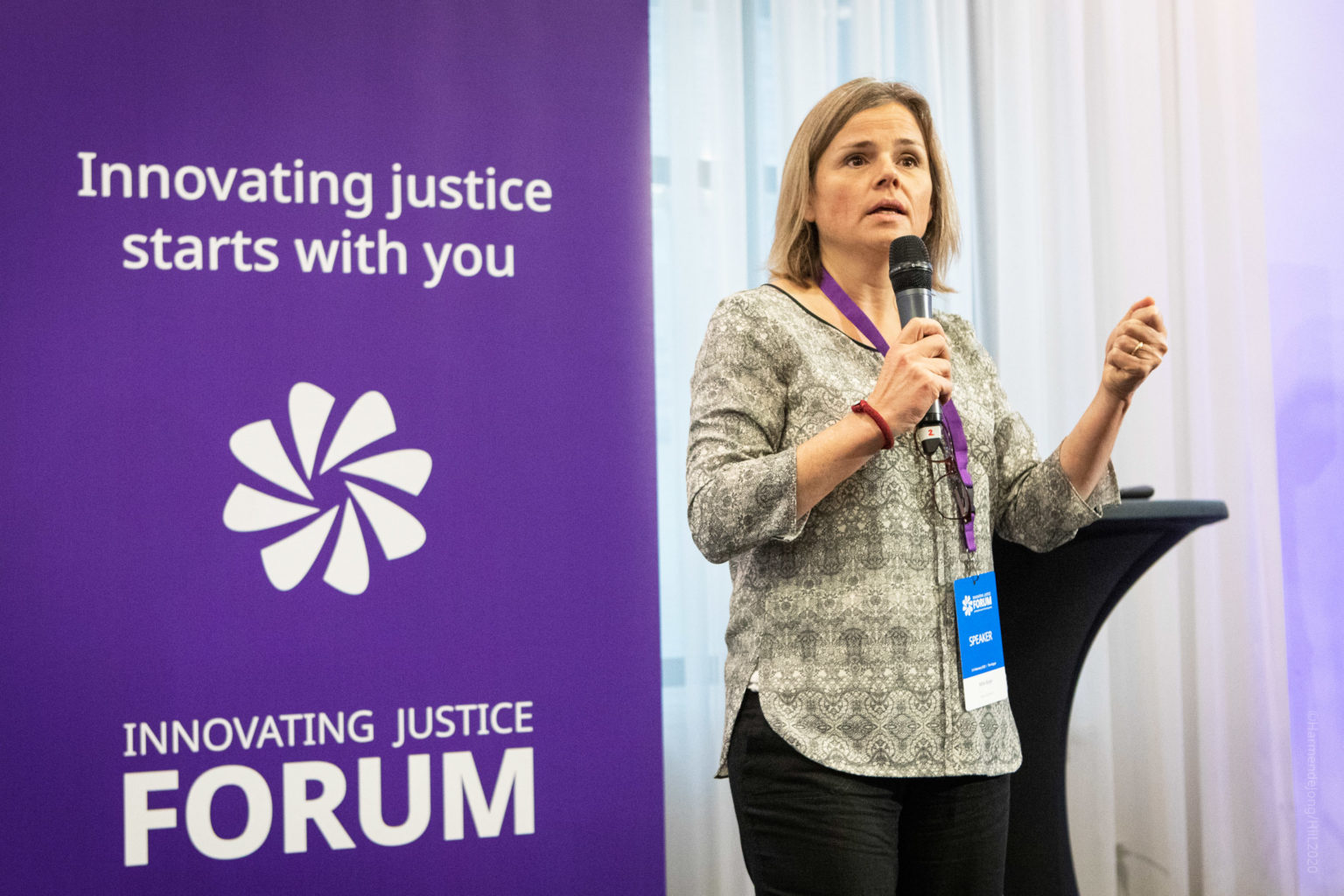
Each stakeholder group has their own needs and concerns and there is a stretch they need to make to unlock the stalemate.
Mille Bojer, Reos Partners
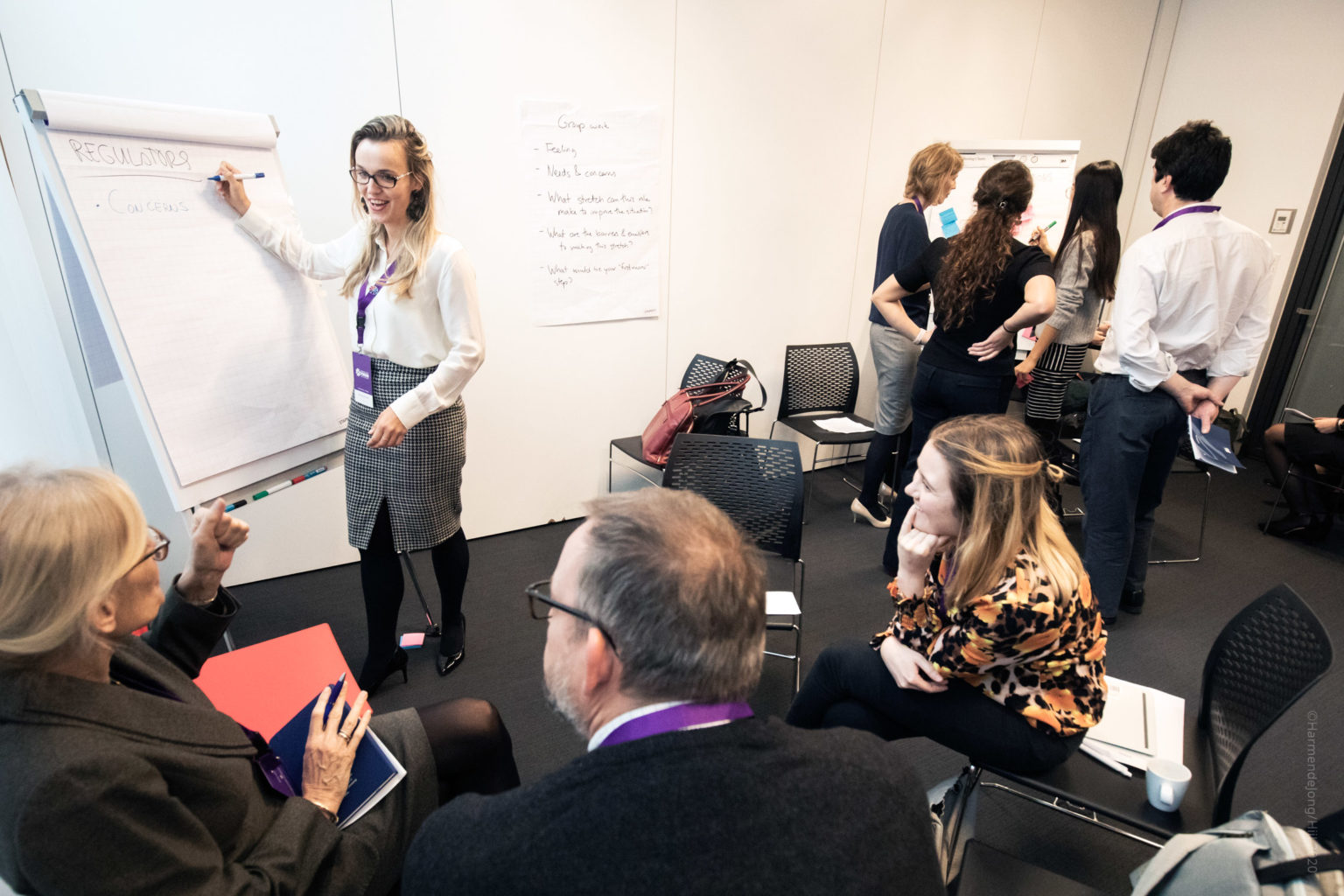
Involving the private sector in SDG16.3
What was new for me and exciting to see unfold was involving private investors (social impact investors, in particular). In previous years, the IJF consistently attracts justice workers, innovators and leaders. But to close the justice gap; our research shows a need for increased investments from the private sector. We mapped out a plan for engaging and attracting private investment with that key stakeholder: Develop consensual measures of justice outcomes, unlock monopolies, help innovators use data.
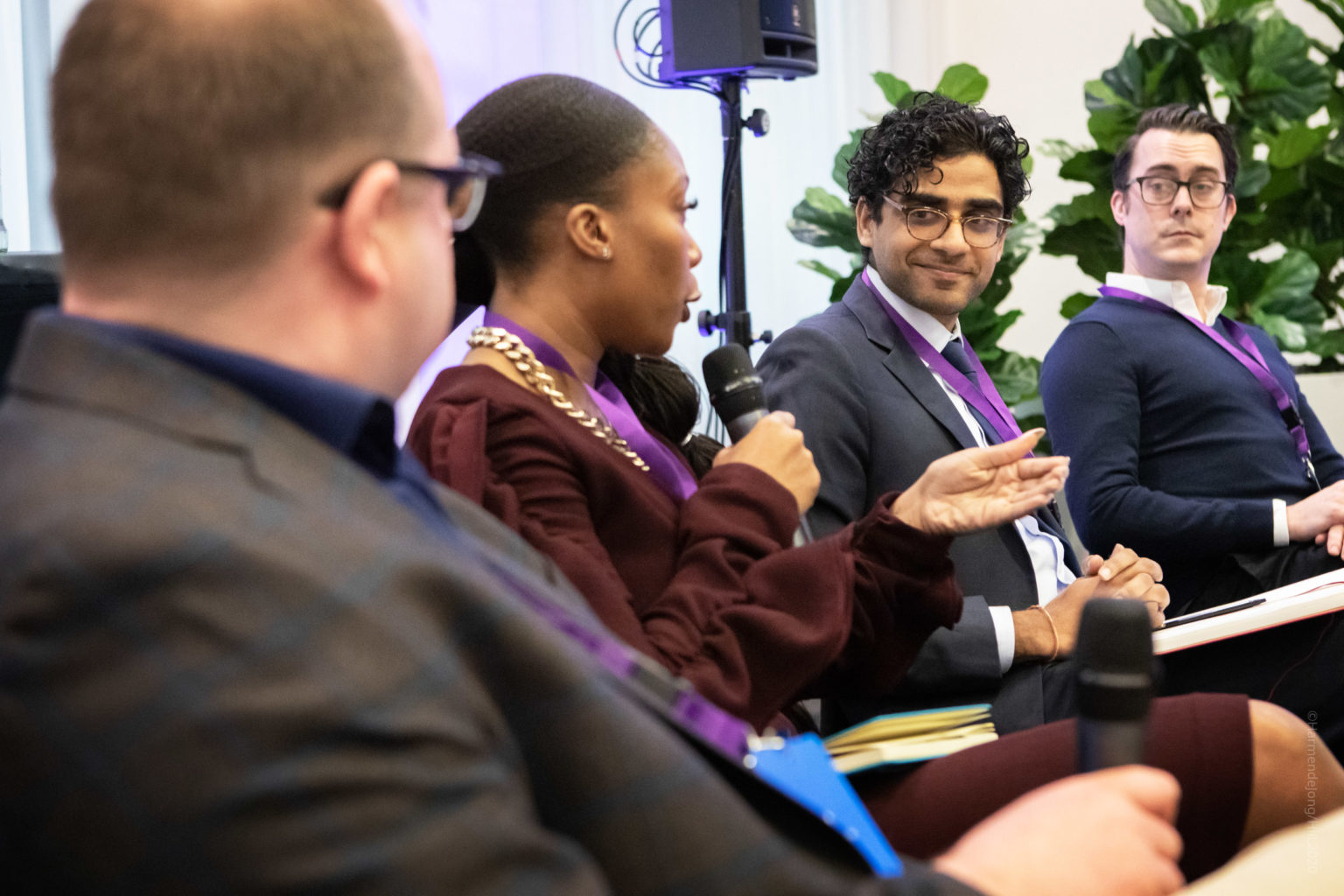
Do public/private partnerships erode public sector leadership in justice?
Critical reflections on the journey towards universal justice care for citizens.
One of the most poignant and persistent topics for me on this day was how to deliver more investment in the kinds of services that help the most vulnerable while protecting justice as a public good. I hope to see these conversations taking place broadly and without delay at the national level in 2020.
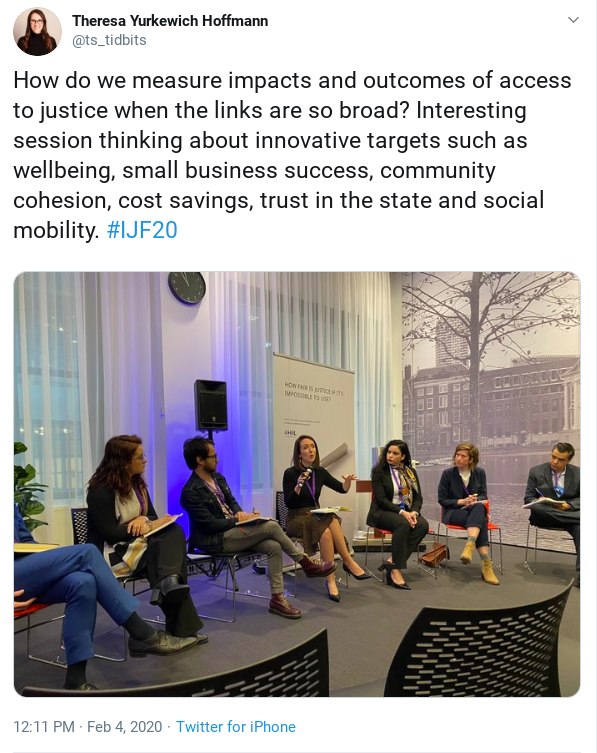
Unlocking the bottlenecks in financing universal justice care
Justice innovators are good at locking in value and focusing on high-quality services. They struggle with dependency on governments to increase revenues and be viable. Bolstered by the ability to prove the efficacy of their solutions, (e.g. user-data of good experiences), partnering with social impact investors for financial viability is possible. But for scale, the new solutions need to find a home in the justice system. Globally, justice sectors are struggling with the political will and appropriate regulation to open up to new solutions.
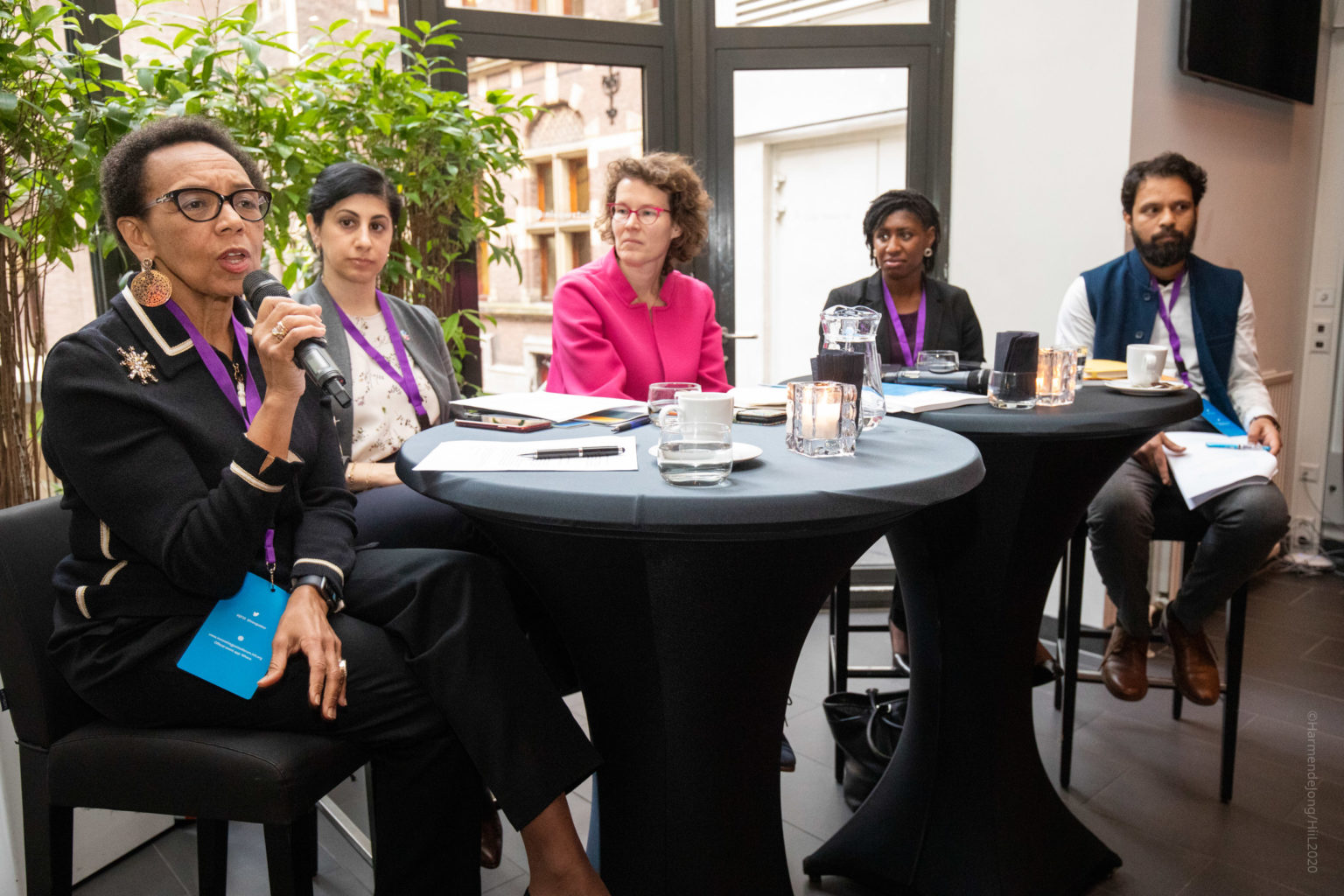
While it is very importnat to have political will, we must ensure that issue of access to justice does not become politicised.
– Allyson Maynard Gibson QC
Community justice funds paid by private actors can be a viable substitute until policymakers are able to align other priorities with increased access to justice funding. This work is accelerating thanks to the work of international organisations (OECD, World Bank, Task Force on Justice) that connect increased access to justice with other such goals of zero poverty, security, fair employment and gender equality.
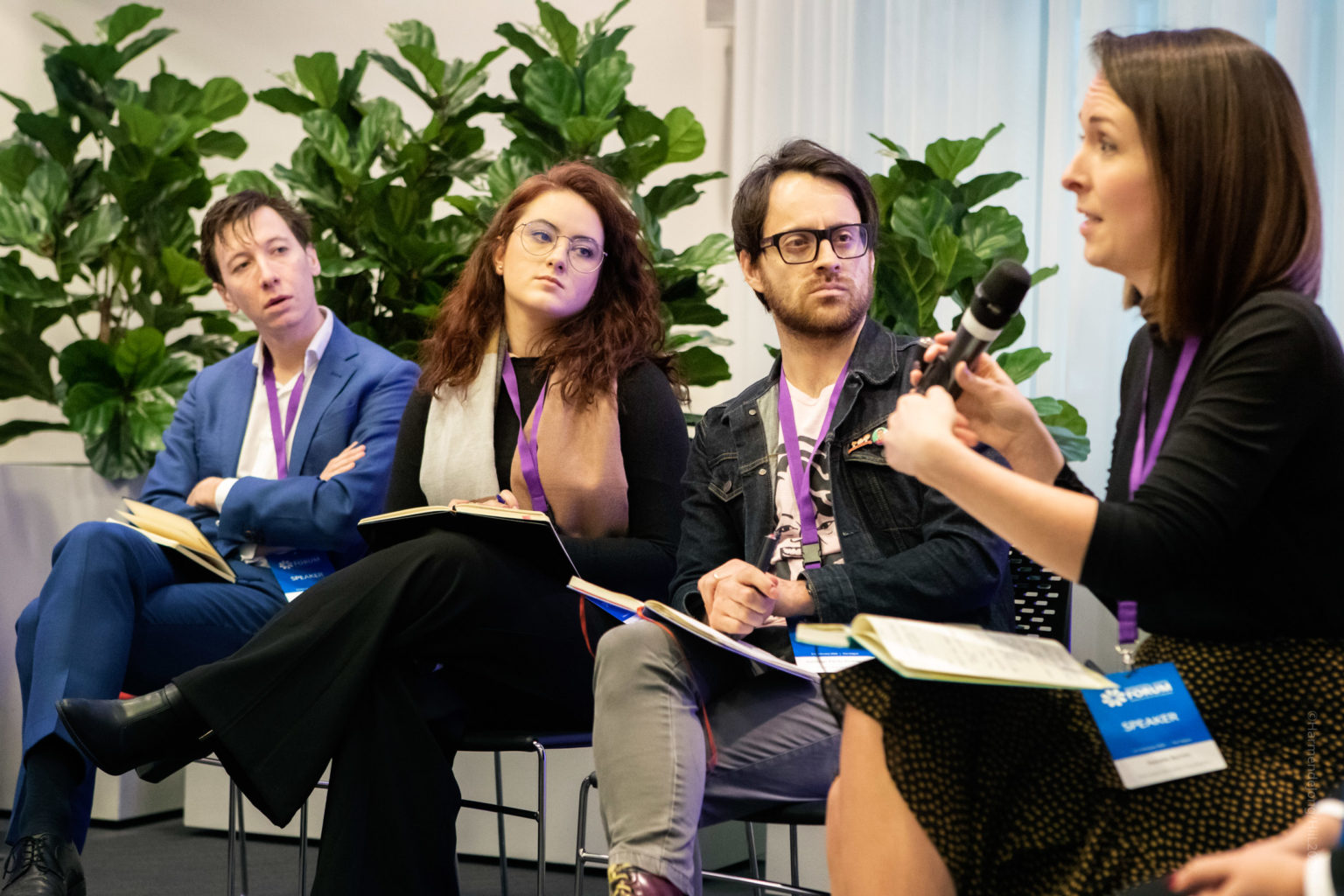
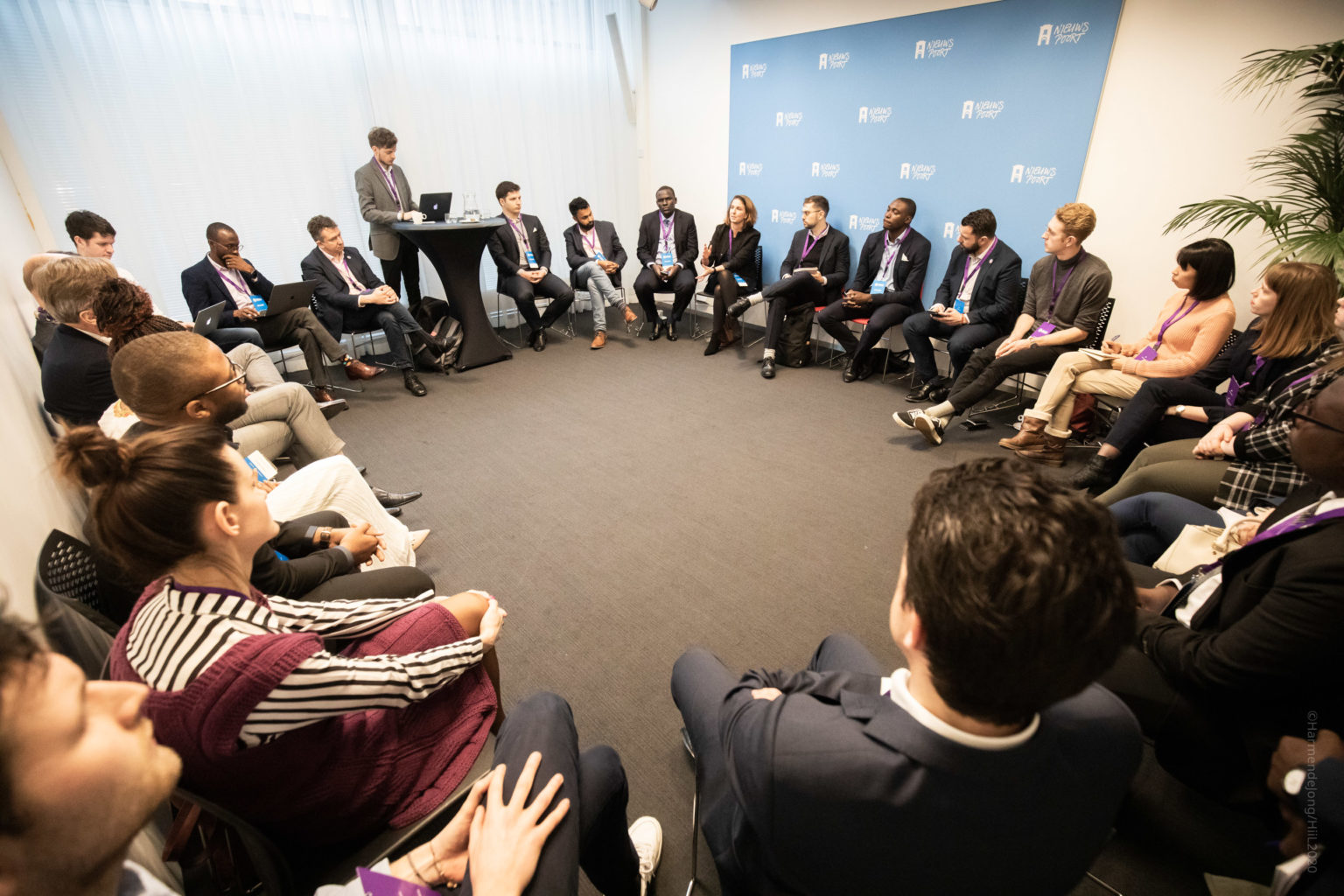
Changing acceptance and mindsets takes more time and better communications on the evidence of what works and data from the supply and demand side. We need to help the justice sector change a number of fundamental things so that the best ideas to prevent or resolve justice problems can scale and help the 5.1 billion people in the world who lack meaningful access to justice.
HiiL´ s upcoming SDG16 report, Charging for Justice argues for an outcomes-focused approach for social change that considers the needs of each stakeholder group. Outcomes that focus on the beneficiaries are key to making the business case around financing justice. More on this to follow.
The Innovating Justice Challenge
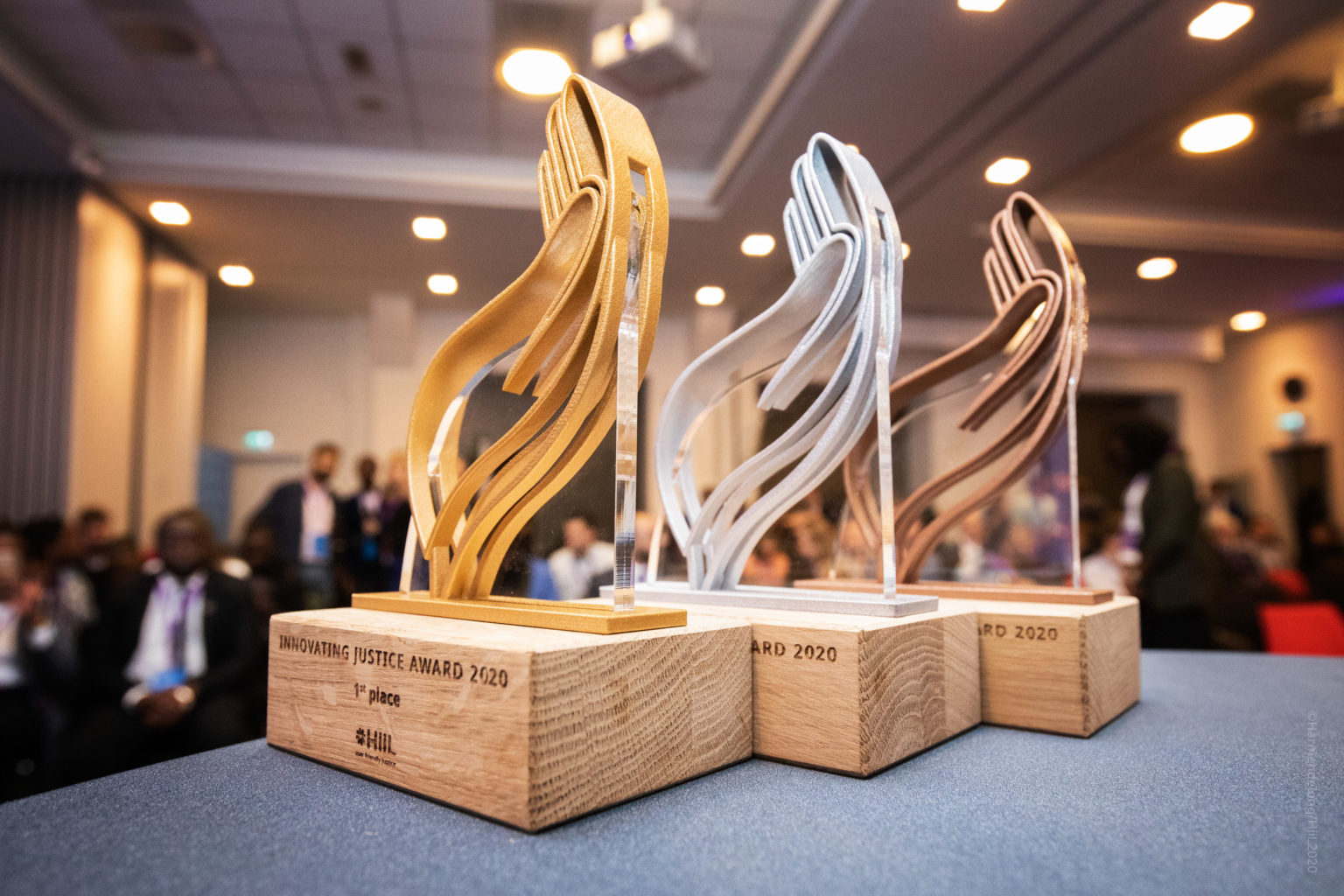
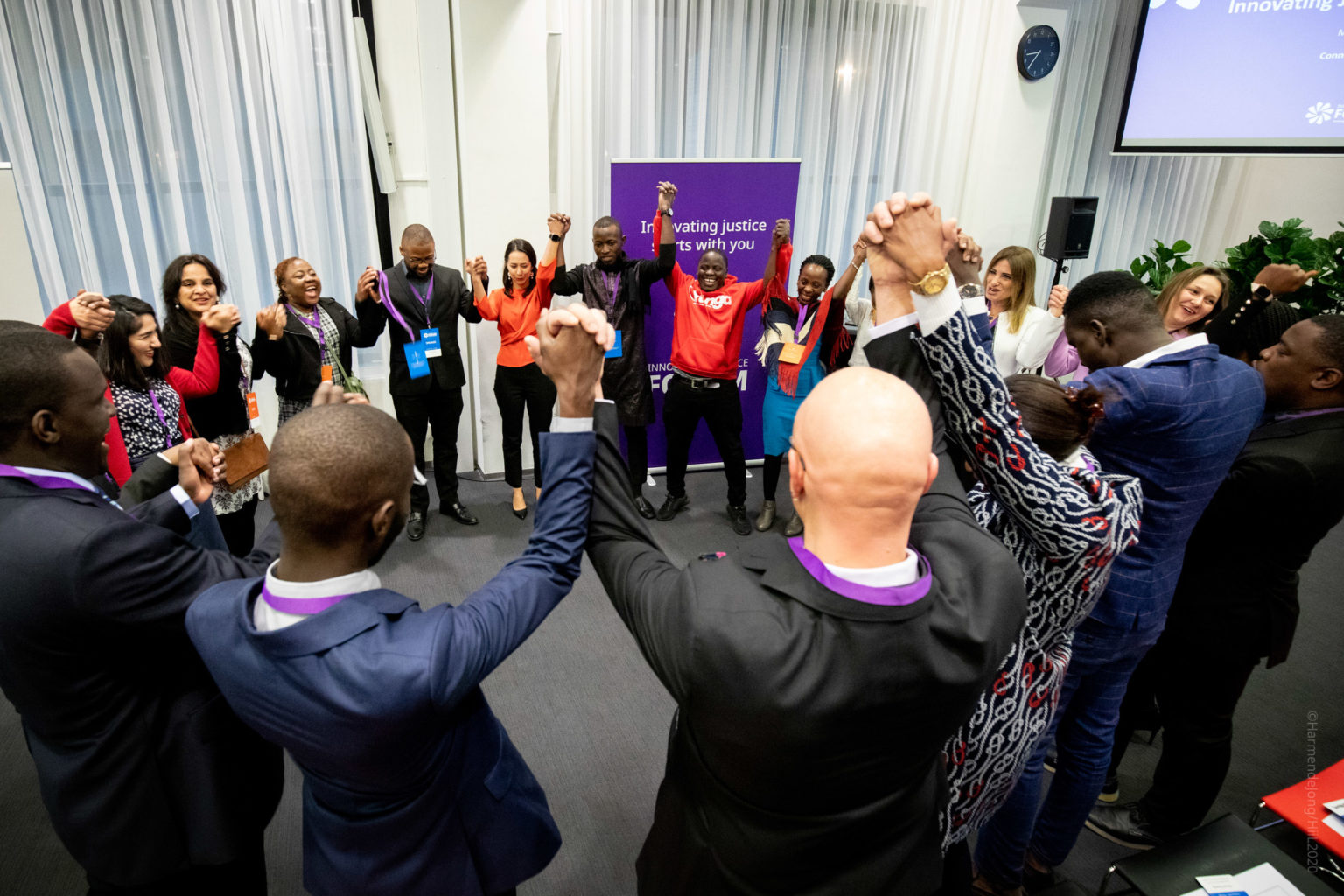
Every year, the Innovating Justice Forum is where we host a dynamic pitch competition: the Innovating Justice Challenge. Each team is given just four minutes to tell a panel of judges why theirs is the solution worthy of being crowned the winner of the Innovating Justice Competition.
Fourteen teams of justice innovations from around the world, but mostly on the African continent, brought a lot of energy to the Innovating Justice Forum. These fourteen are all in the HiiL Justice Accelerator programme: our 2020 cohort.
In order of when they pitched:
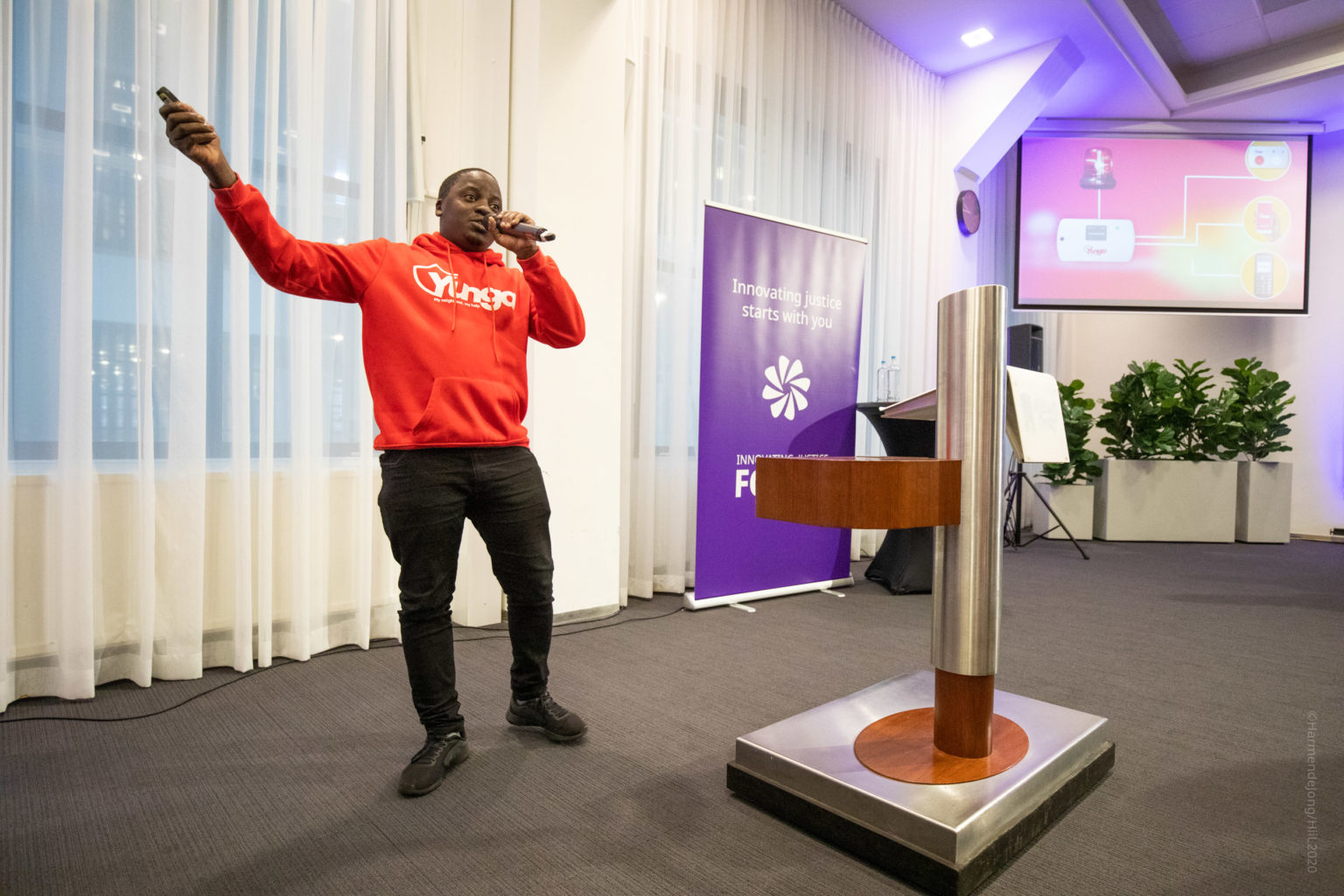
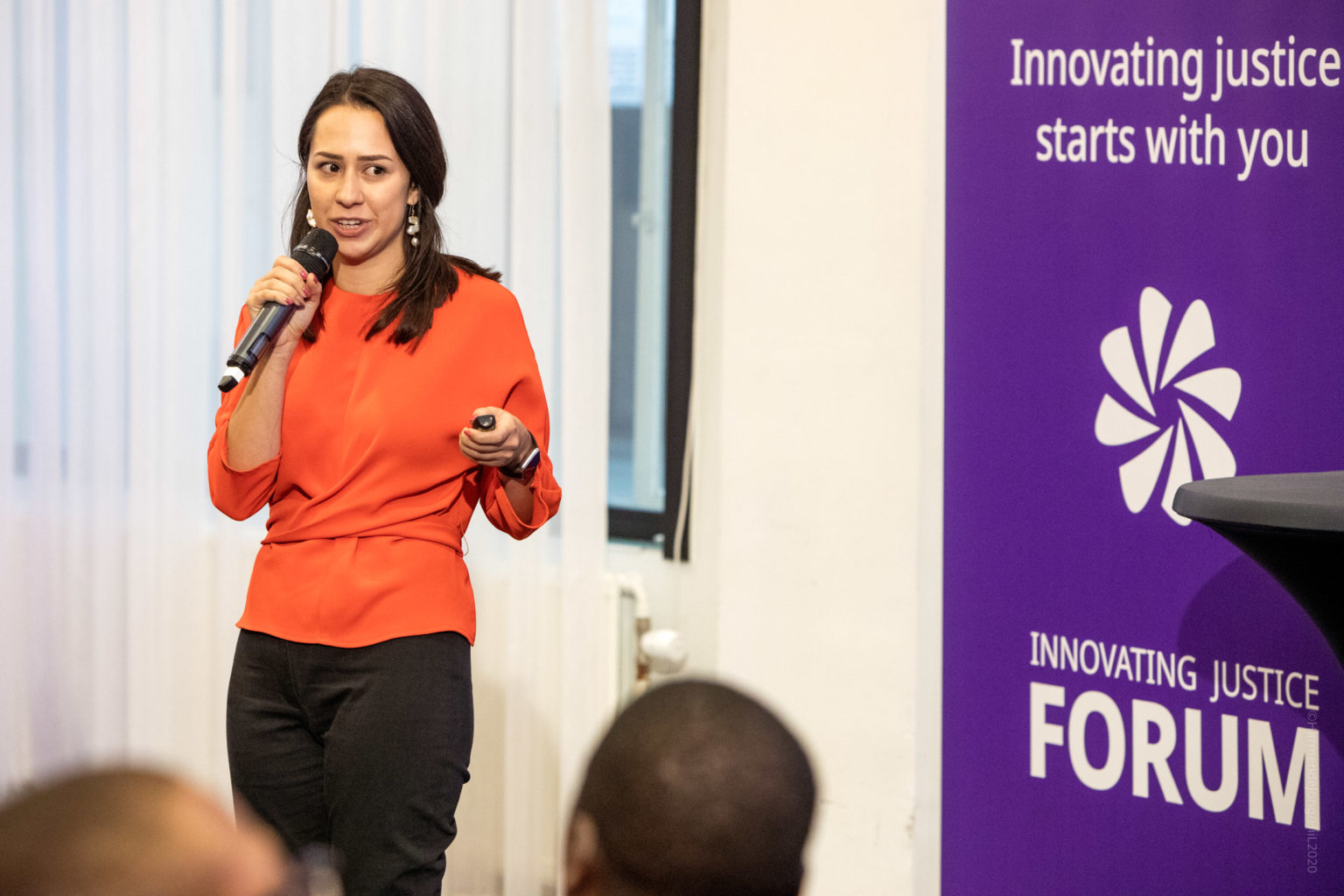
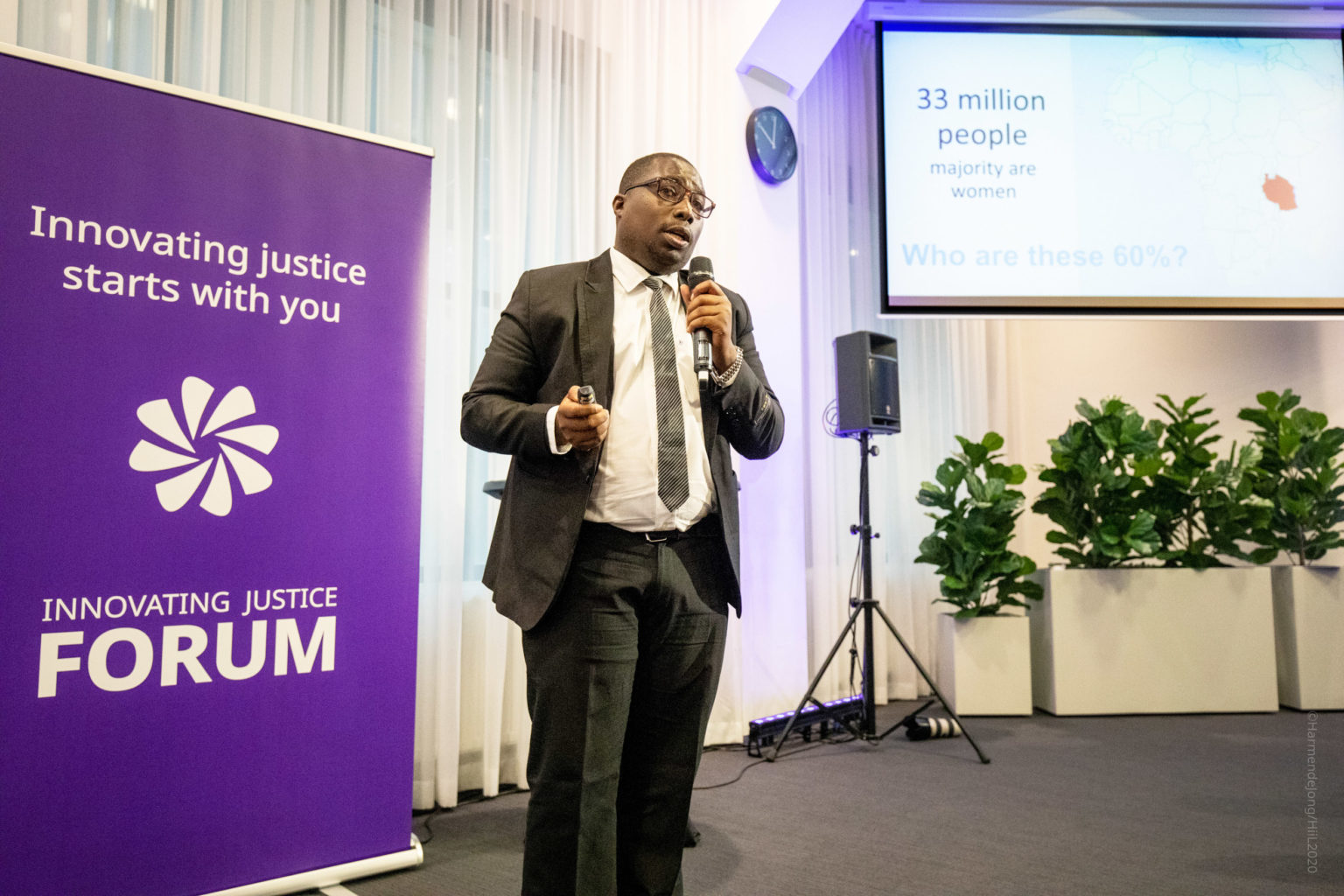
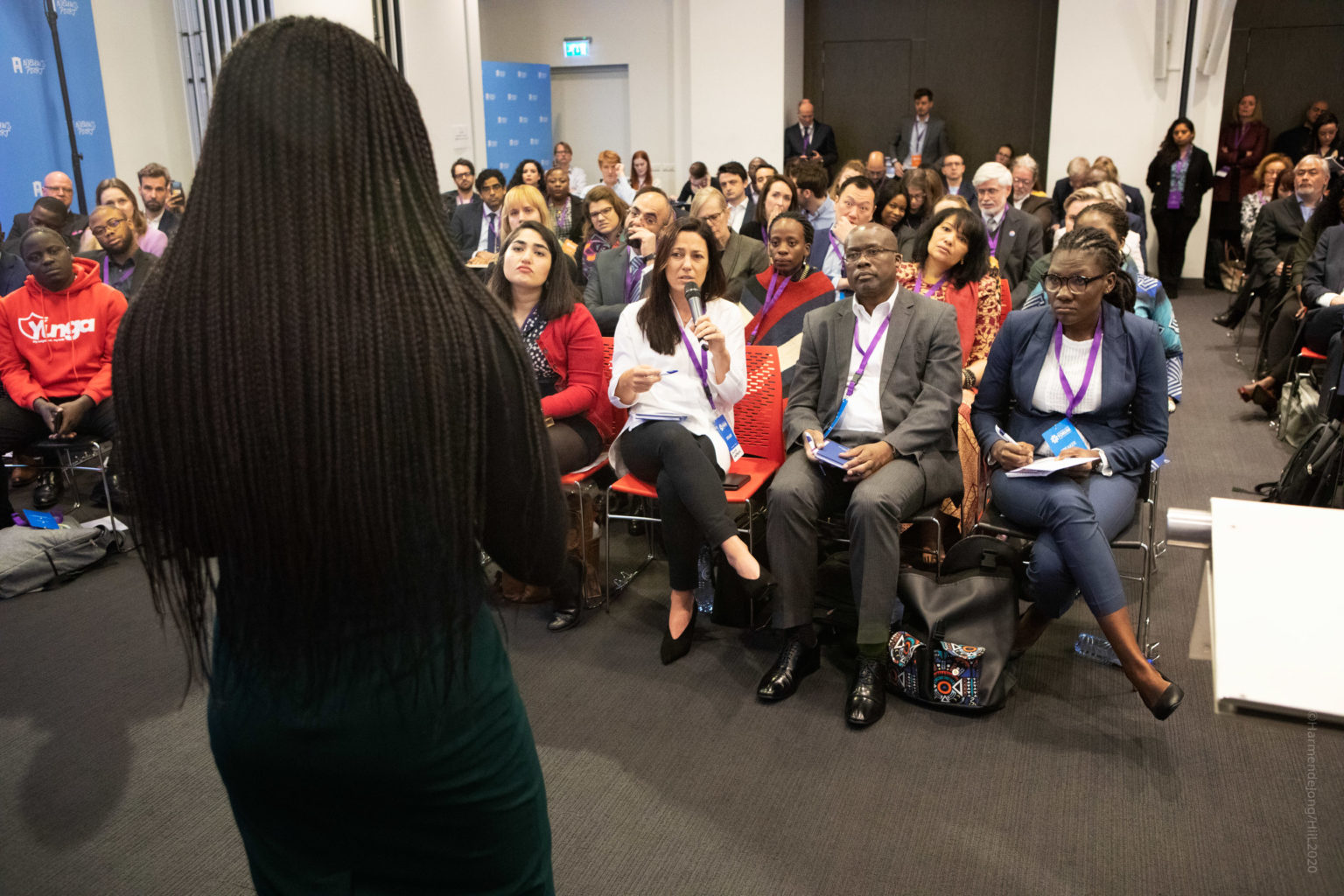
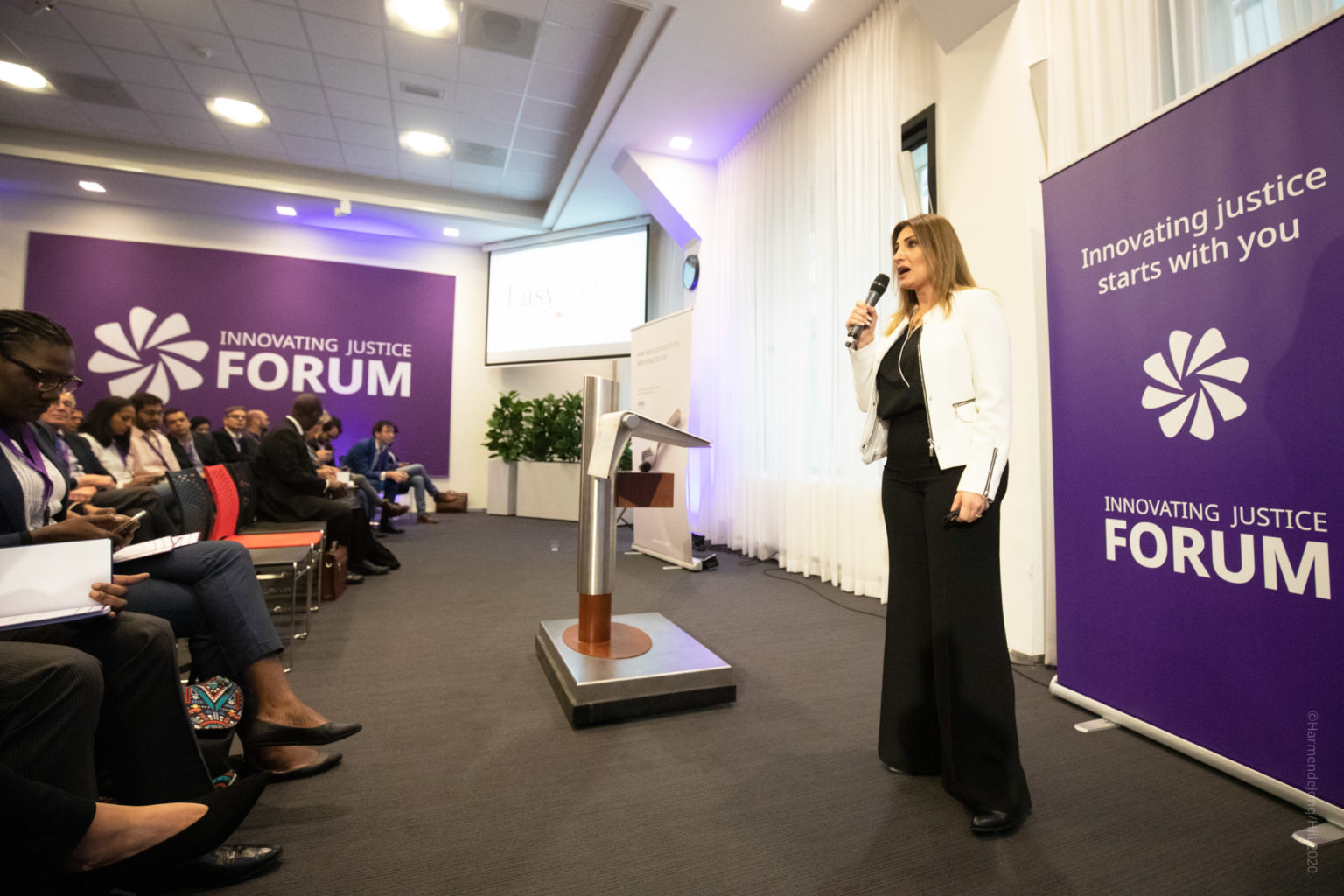
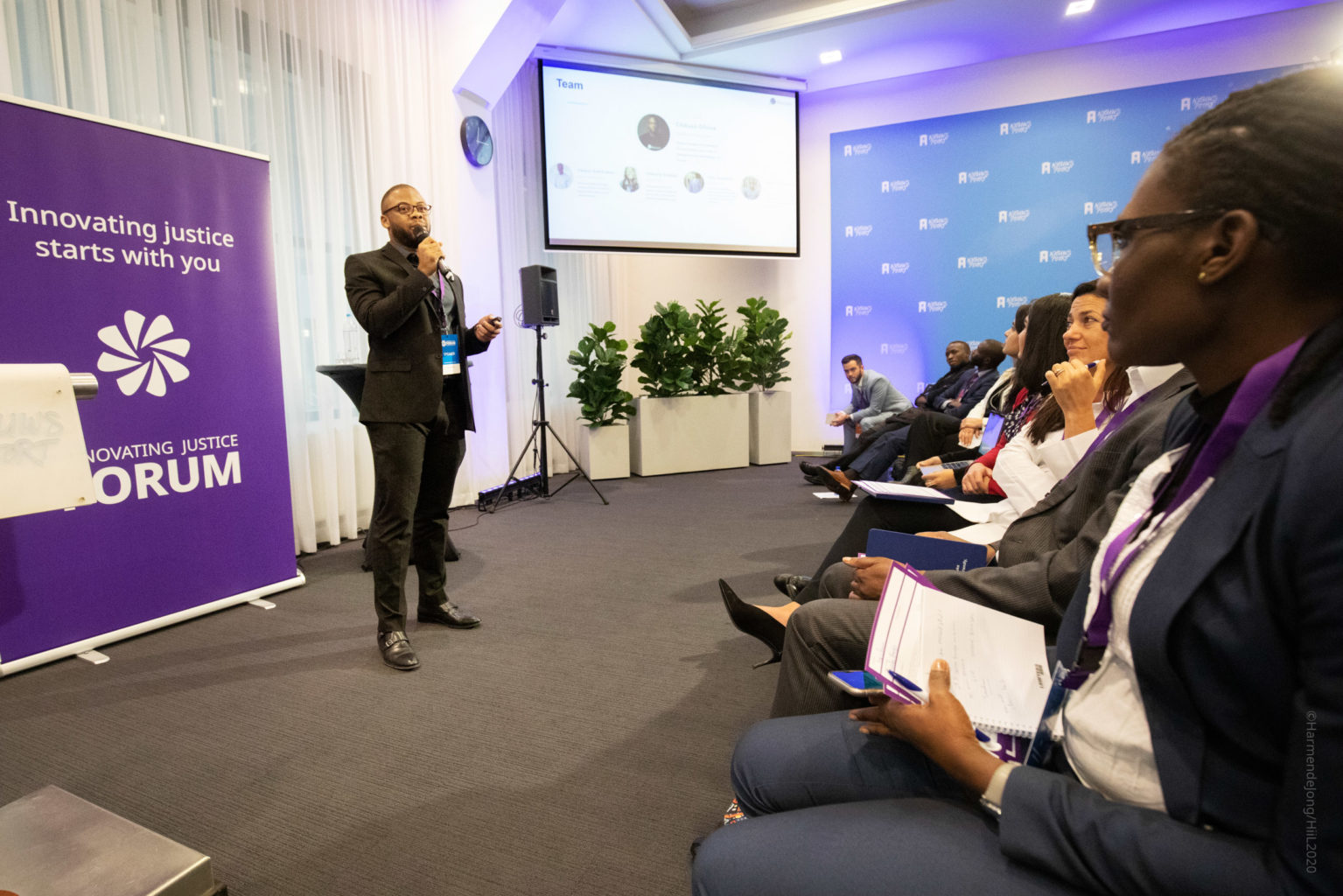
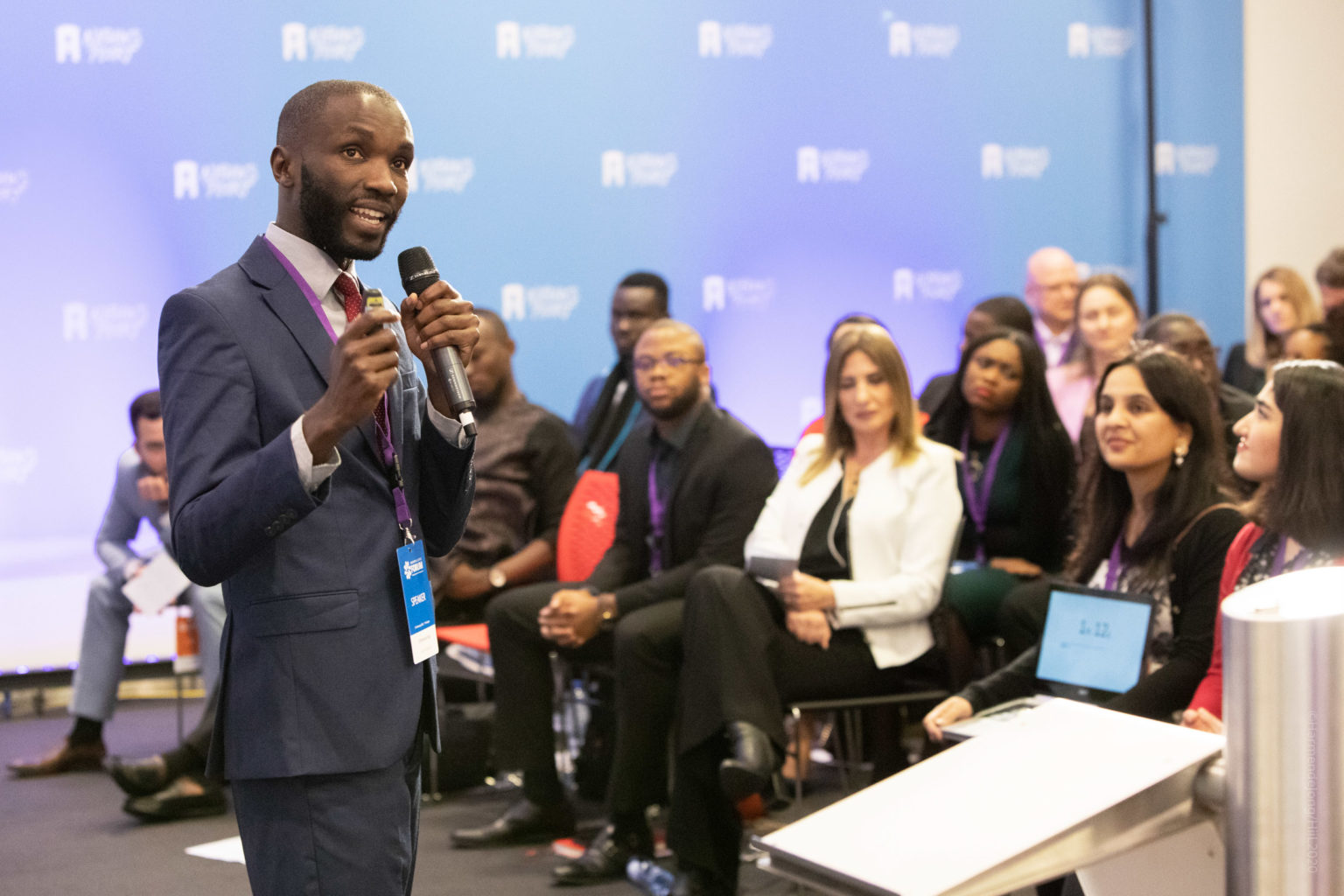
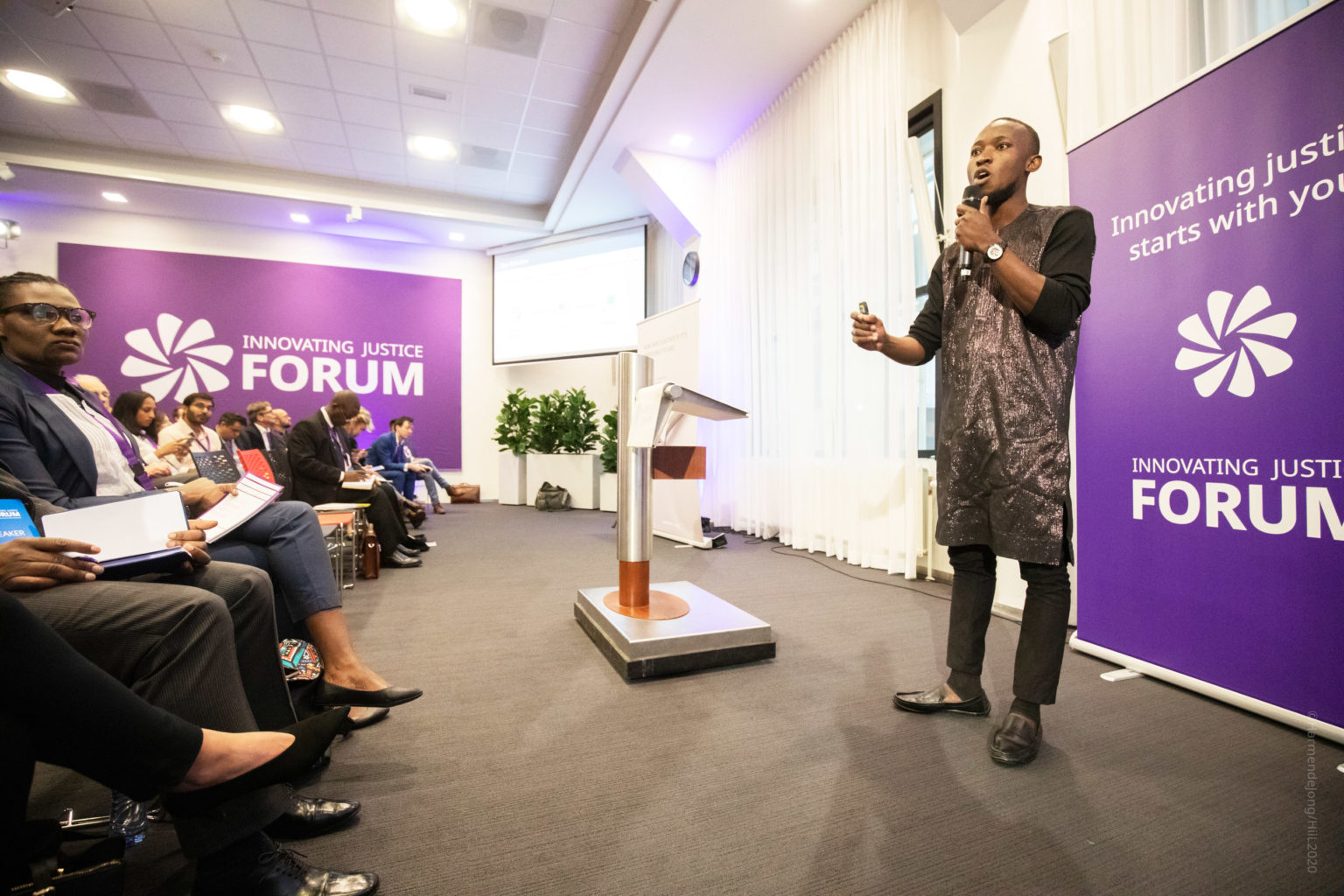
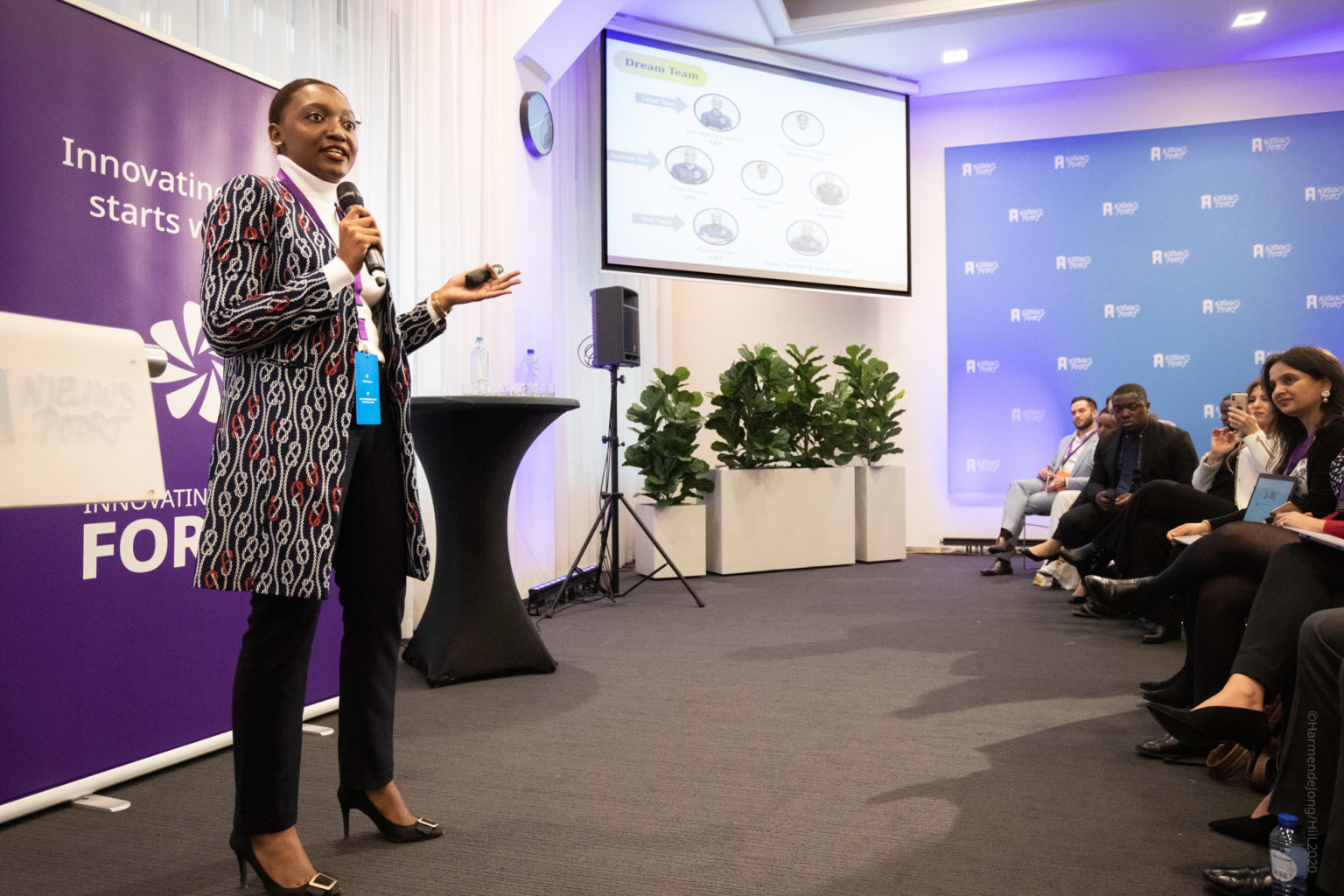
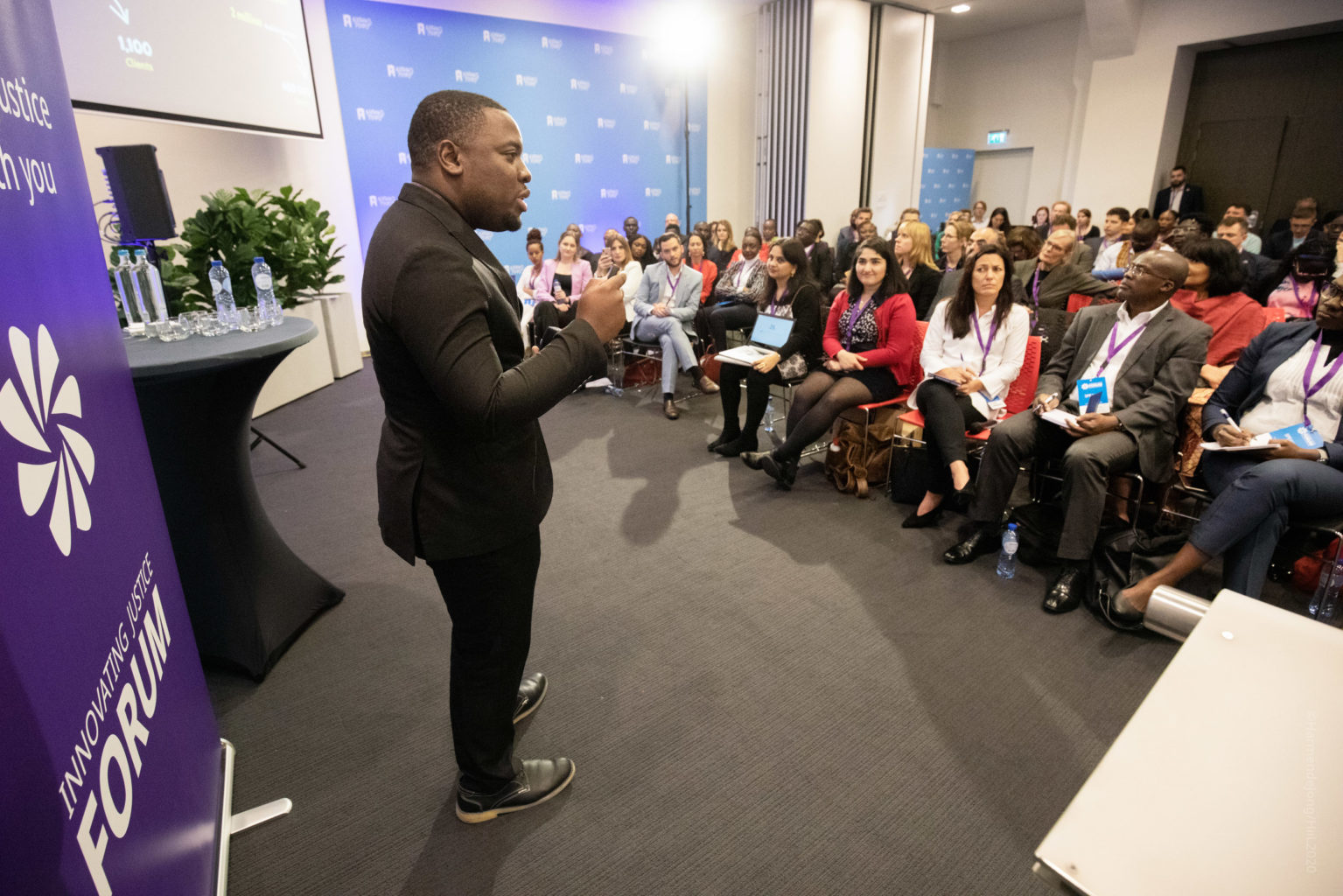
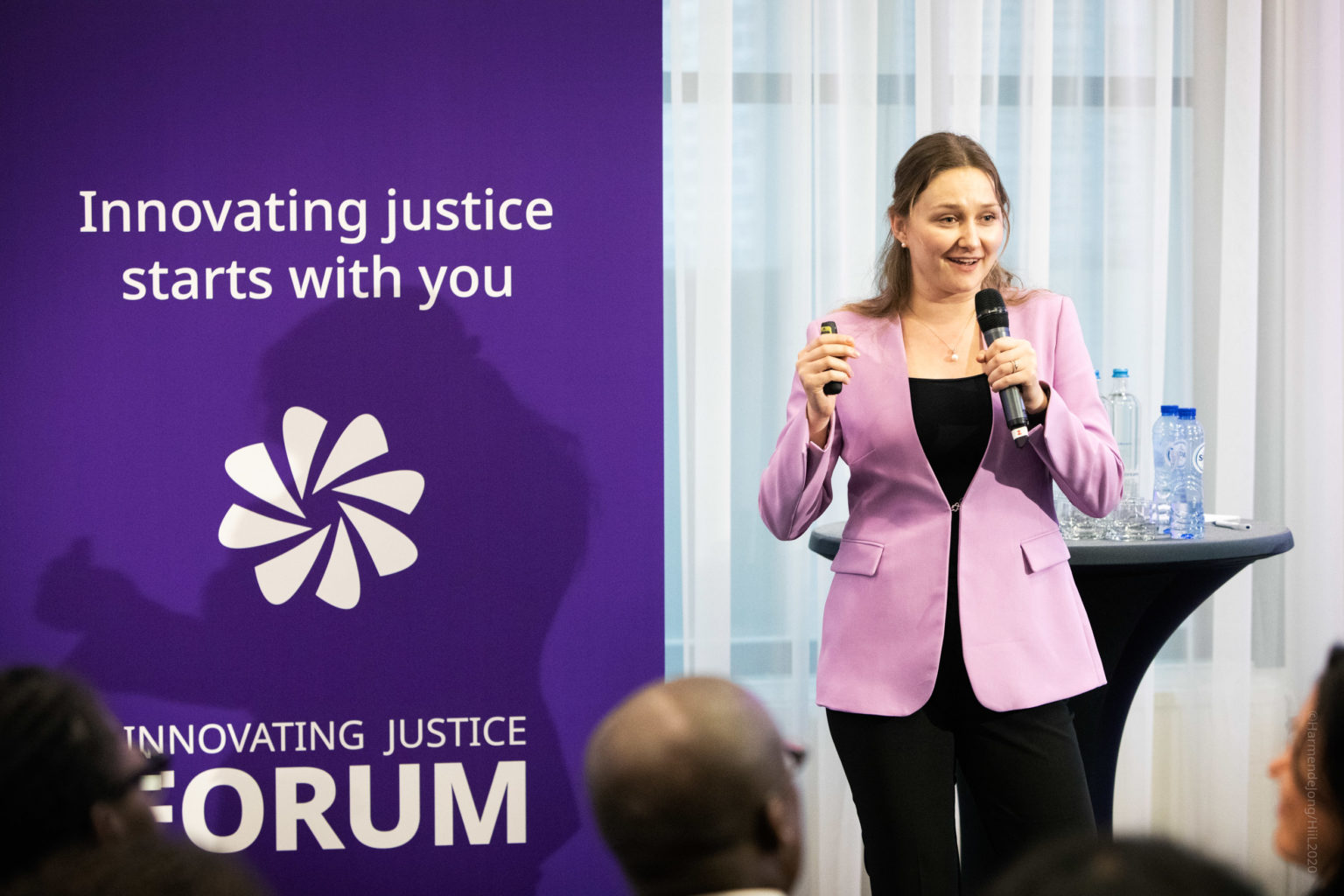
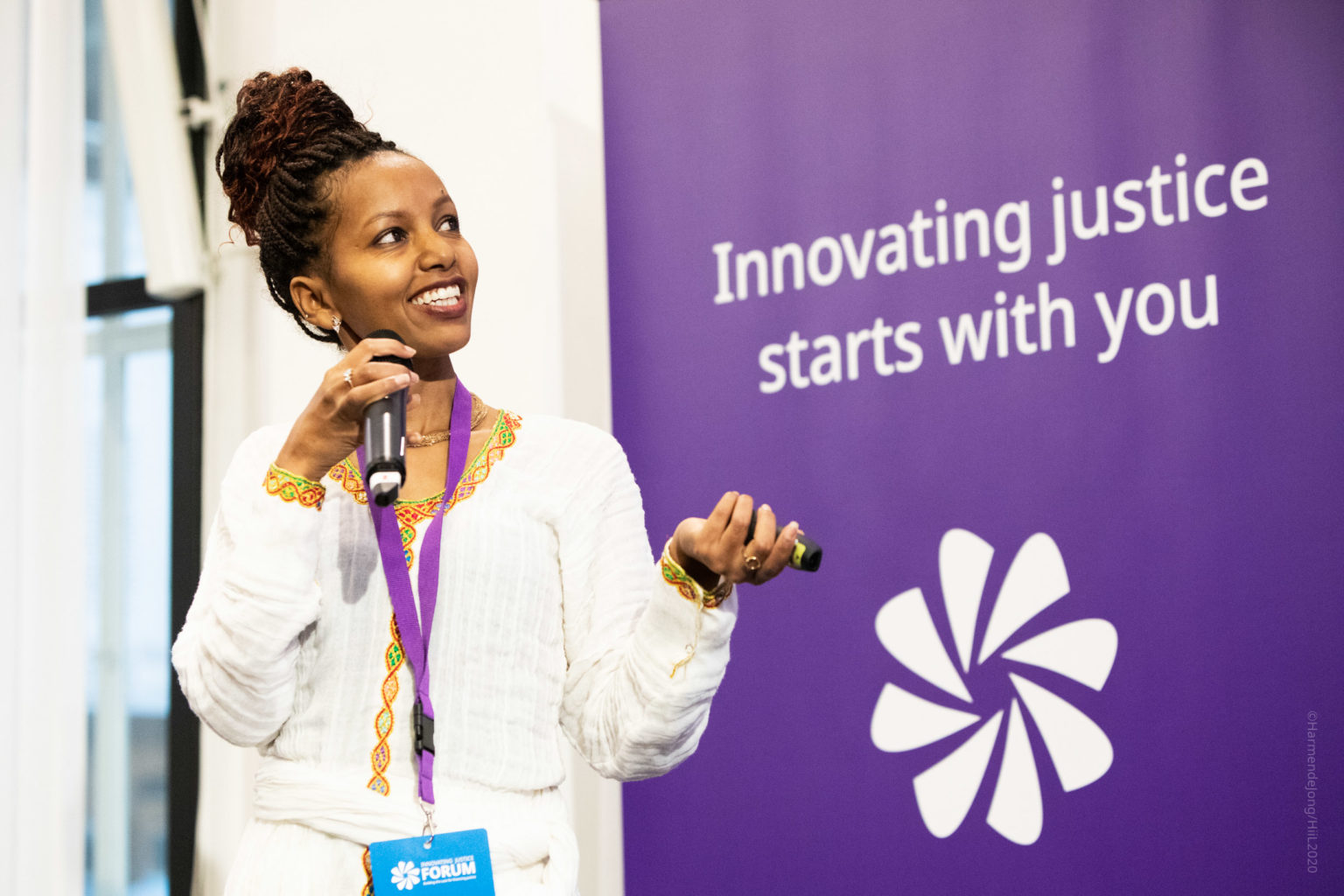
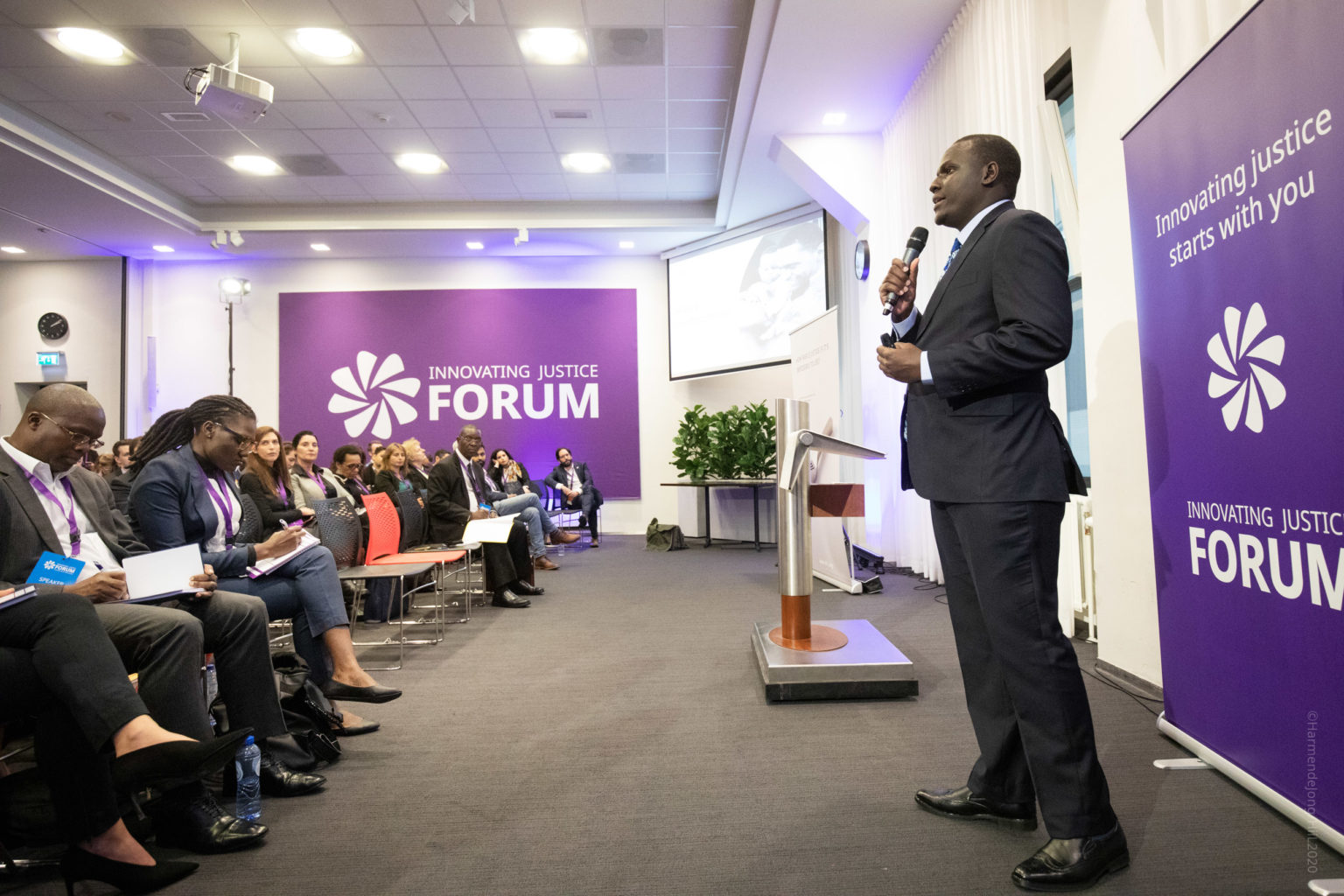
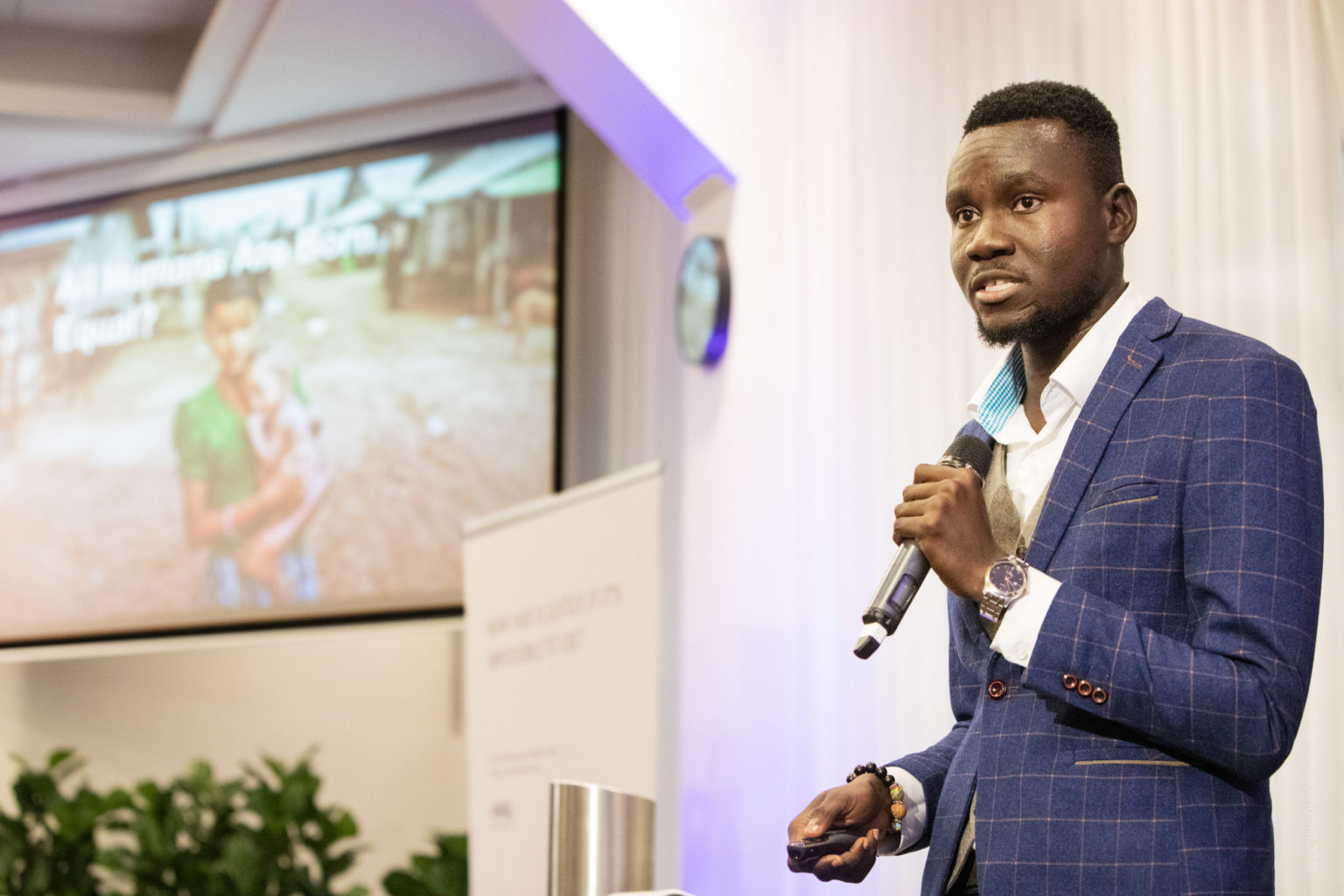
The jury heard all fourteen pitches before choosing the top three. They then assessed the teams based solely on what they heard in the pitch, and the responses questions asked by jury members and a few from the audience. The jury (pictured below) chose the top 3 most promising innovations based on their potential impact, sustainability, scalability and team.
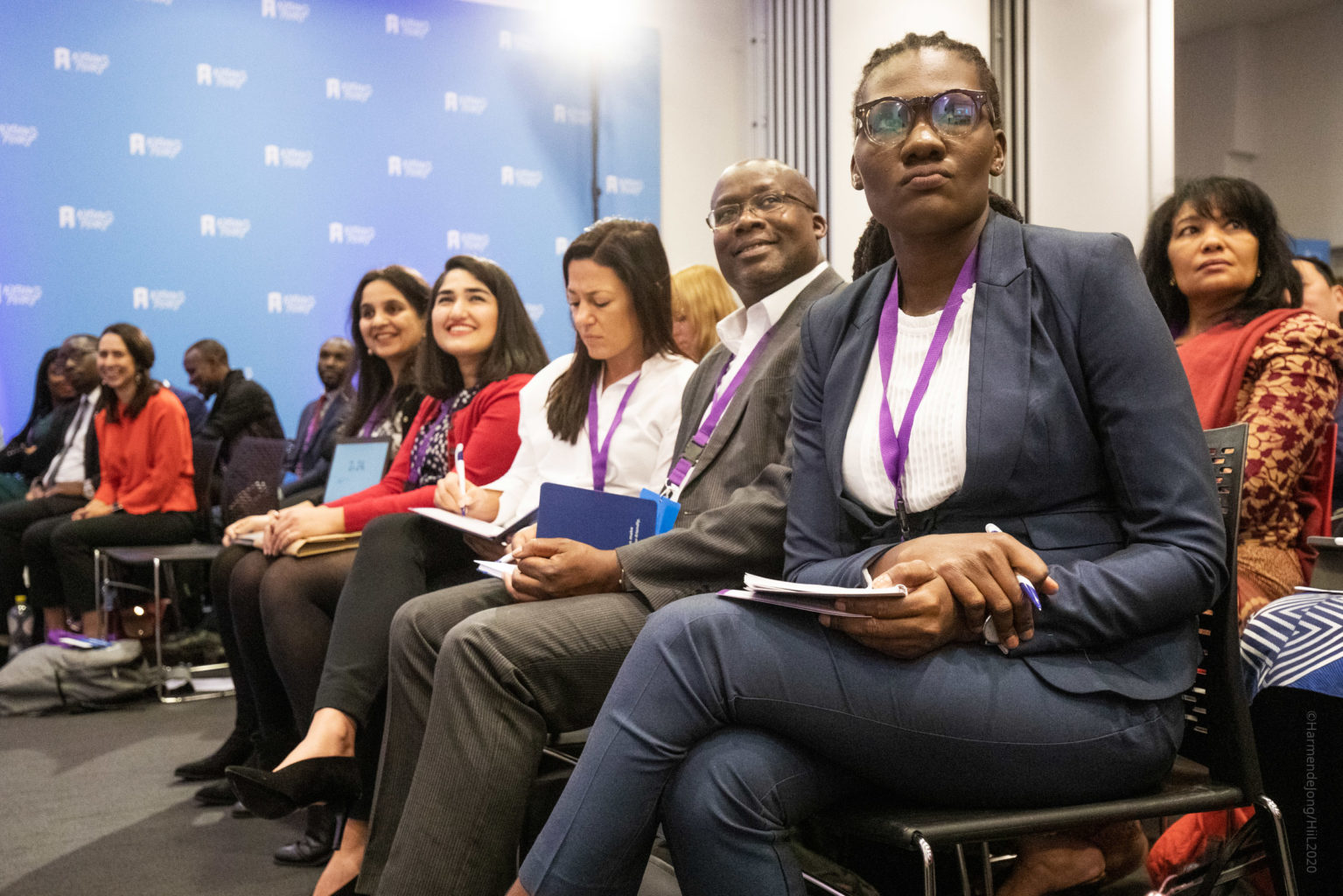
The best three justice innovations of 2020
At the end of the day, having heard all fourteen, the jury took time to deliberate. I actually unofficially listened in as I was working in the same room and it was interesting to hear! I was impressed by their application of knowledge about the justice ecosystems in which the innovations operate.
The jury awarded the following teams:
- Bankly, Nigeria
- Appruve, Ghana
- Sharia Kiganjani, Tanzania
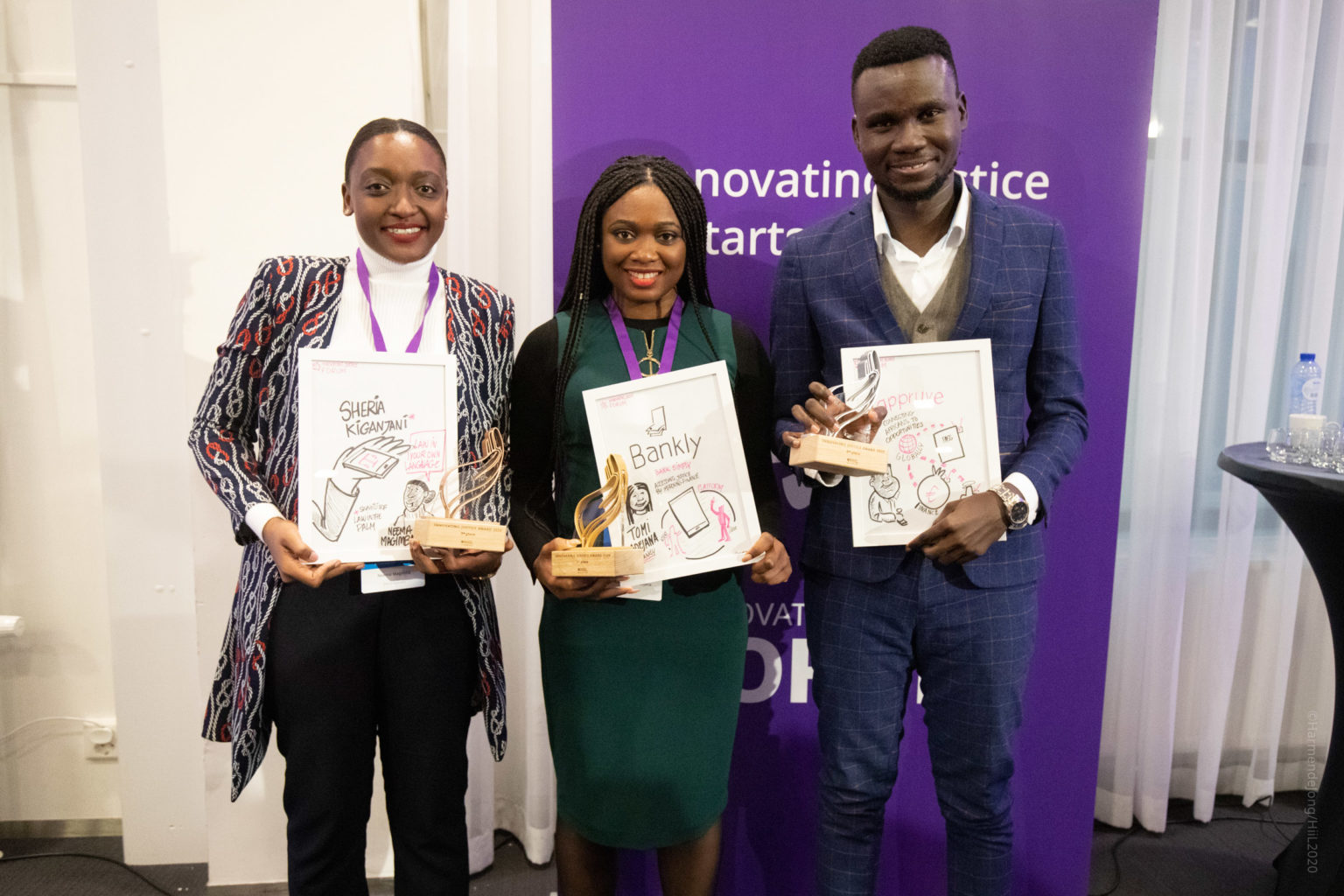
The audience erupted with cheers and even dancing! The support from the fellow justice innovators in the room was loud and palpable. The unity forged by shared struggles on the road to innovate justice is unique. The Innovating Justice Competition cultivates life-long friendship, a lifeline of support, shared journeys and hardship. Read more about it here.
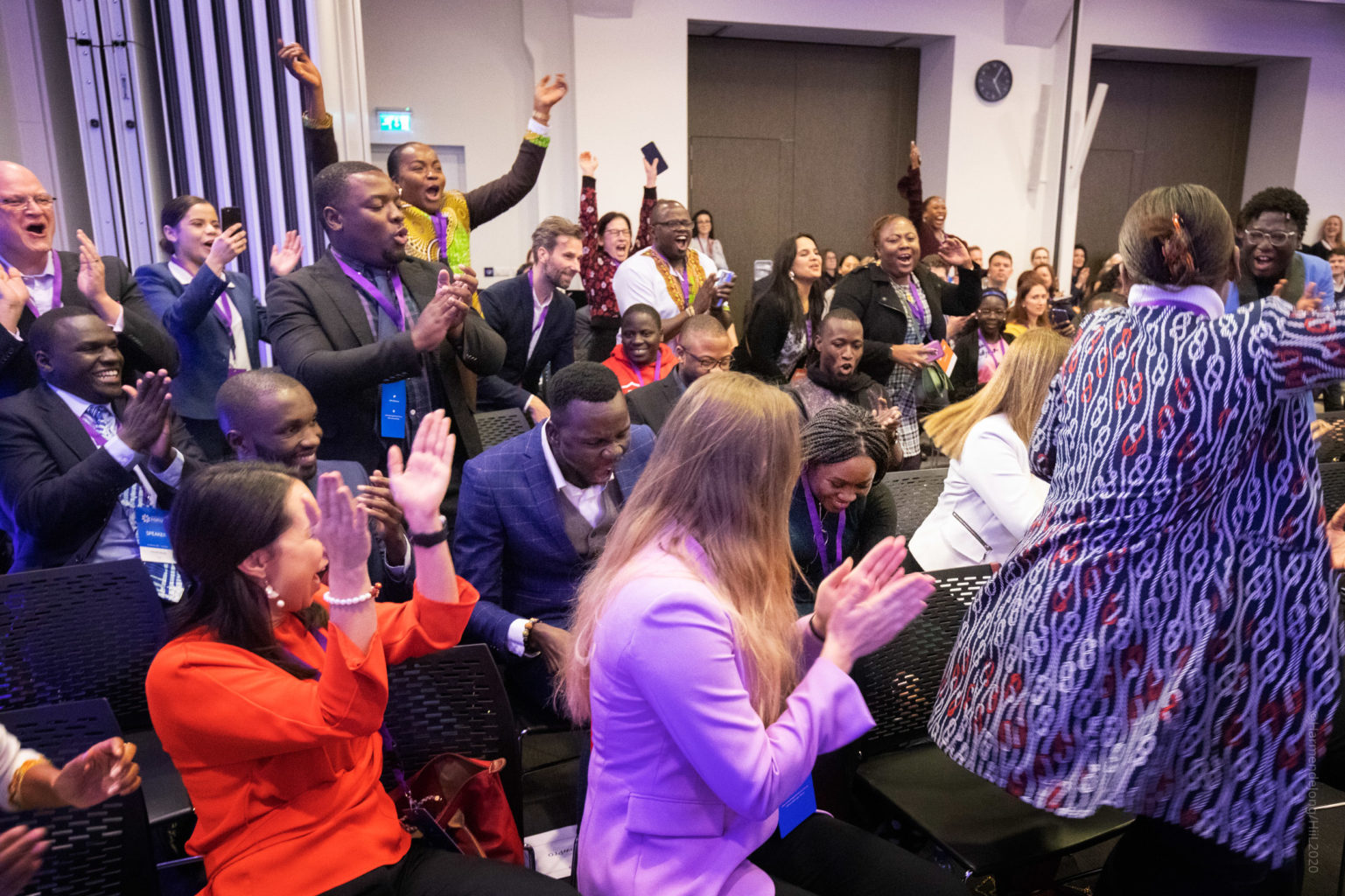
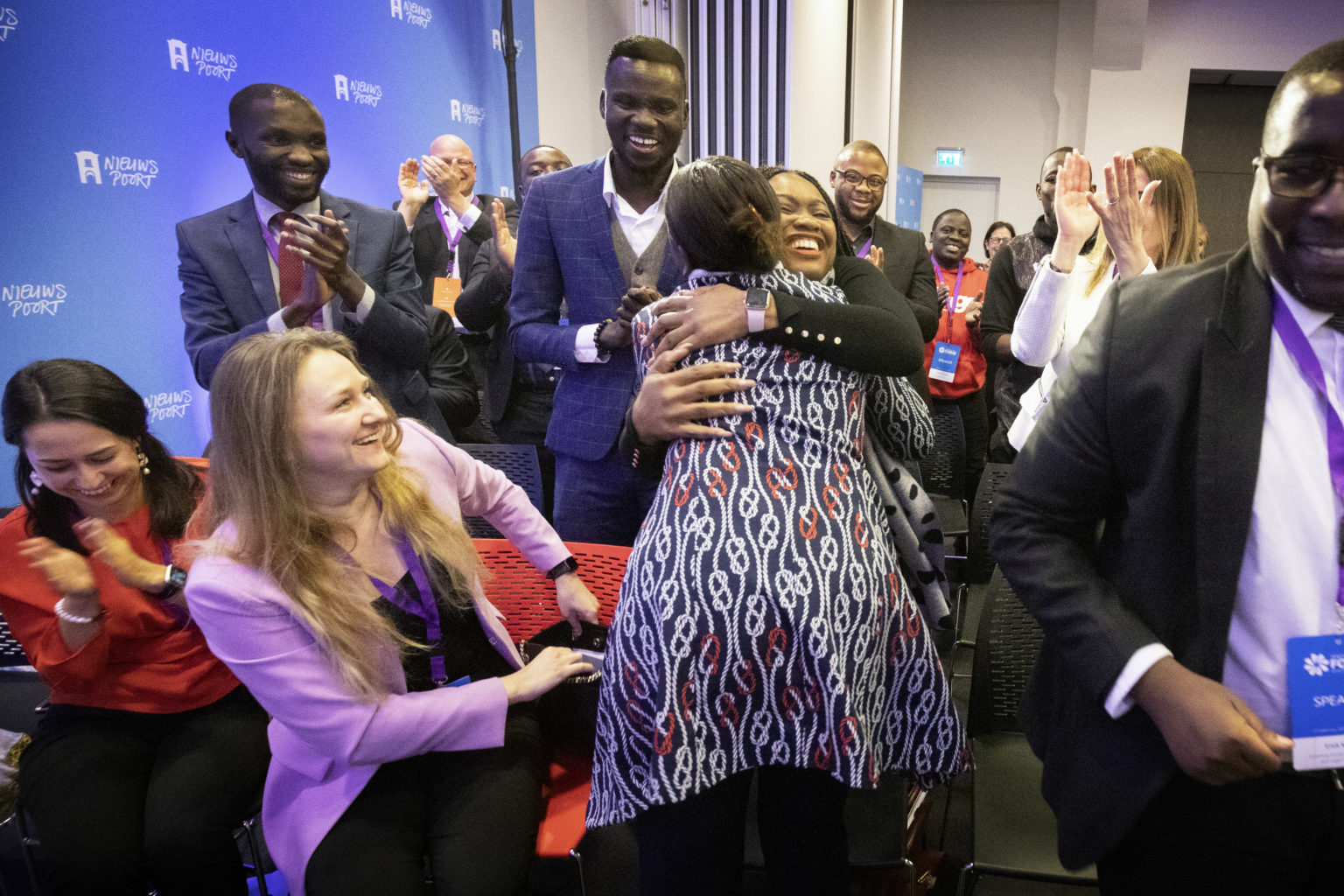
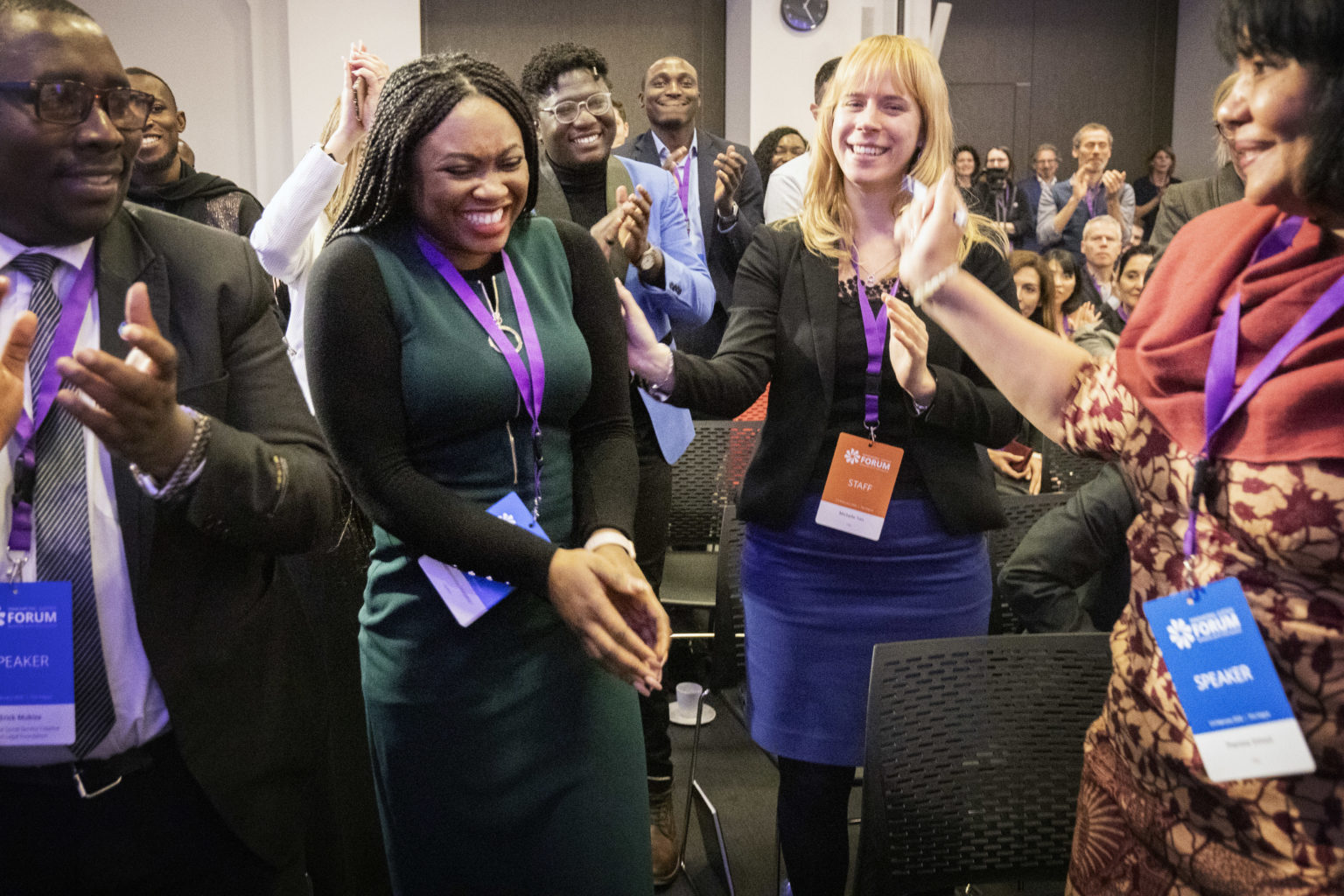
For a feature piece on the winner of 2020 Innovating Justice Challenge, visit this article once you have finished reading about Day 2.
Day 2: Let’s do this
In the official ¨home¨ of the justice sustainable development goal (SDG.16) – The Peace Palace – Day 2 saw representatives from governments, international organisations, business, civil society organisations, academia and think tanks came from different countries primed to work on building the business case to achieve SDG16.3.
How can we fund the ideas that will help the 5.1 billion people in the world who lack meaningful access to justice?
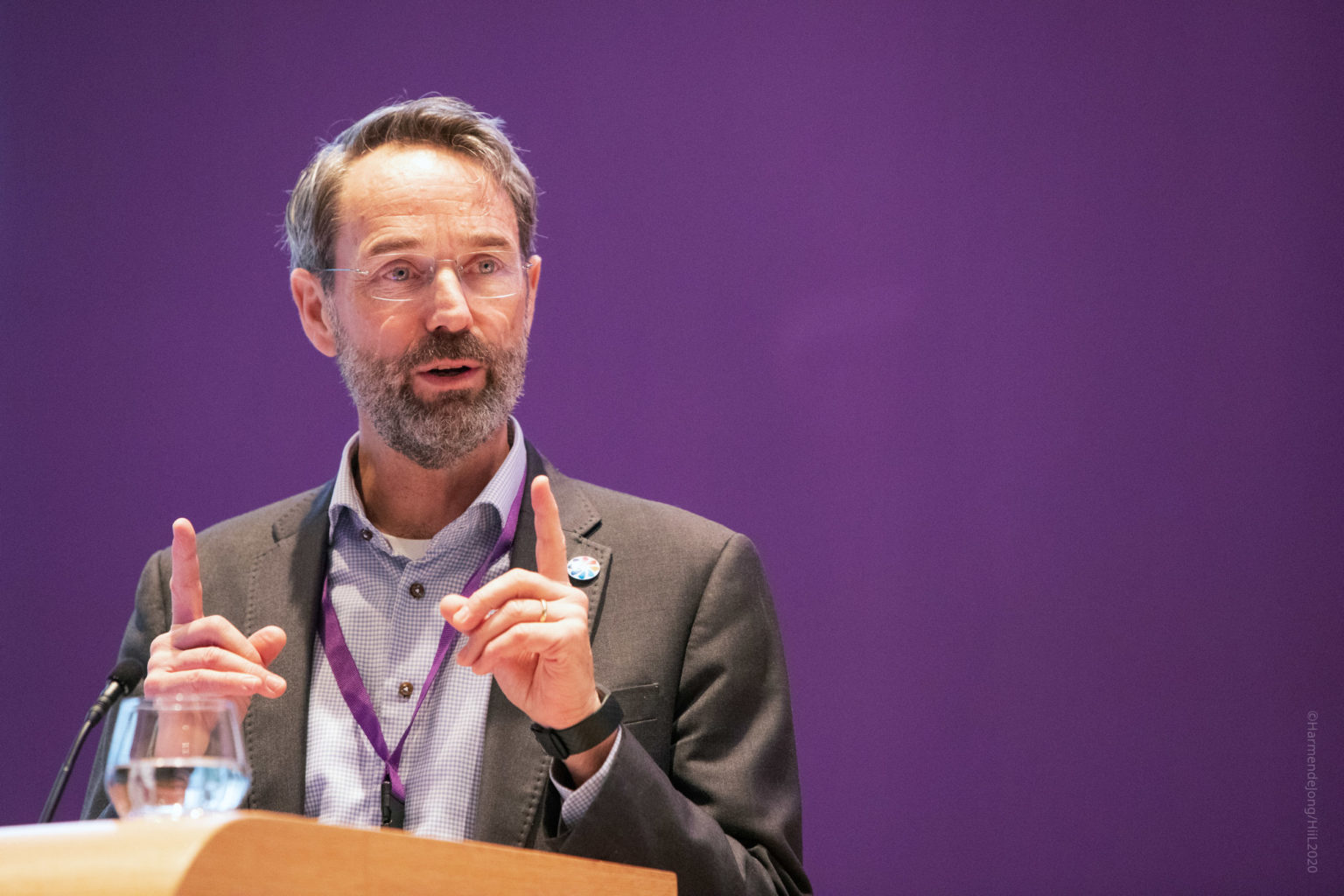
Looking into this room I see – and perhaps more importantly feel – an unstoppable force. An emerging brother- and sisterhood of justice that is smart, courageous, innovative, inspiring, and stubbornly entrepreneurial. The status quo won’t do.
– Sam Muller, CEO HiiL
Our research at HiiL shows that it is insufficient to say even louder how serious the problem is. We need to go further. The new emerging consensus is to put people and their legal needs at the centre of justice systems and re-design around good data on what they experience and need.
Funding justice is presently not often tied to performance or users outcomes. Adding more money would be a clean solution however, I can assure you, it would not work. Similarly, throwing more technology or infrastructure at the problem will not yield that outcomes people need. So Day 2 had to navigate through a lot of messy and complex streams to find what actually changes peoples lives.
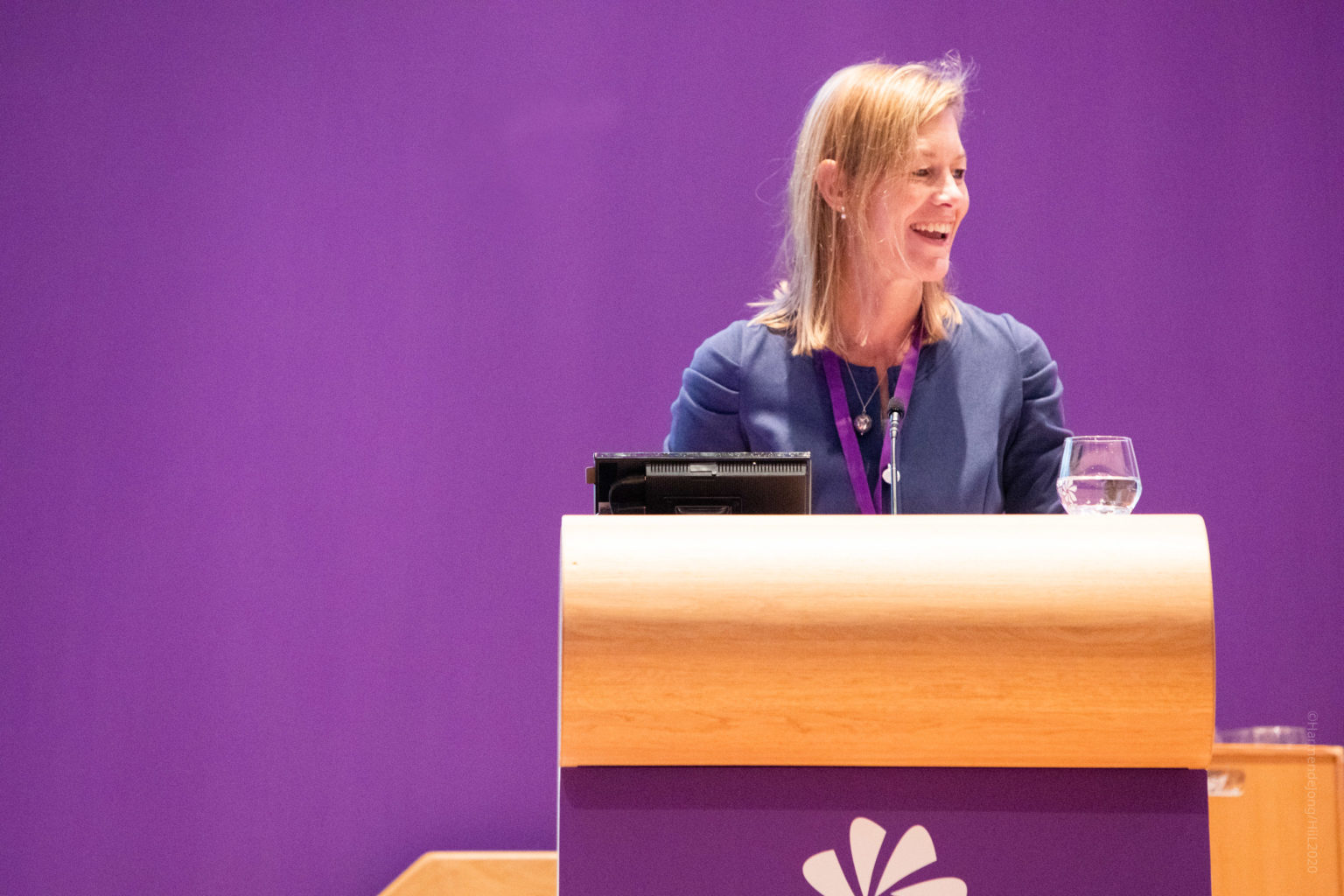
We need to allow people to resolve their problems. The justice sector needs to be open to innovative and sustainable ideas, including innovative partnerships.
Marriet Schuurman, Director of Stabilisation and Huumanitarian Aid, Dutch MFA
Thinking out the box to increase revenues for justice
Analyses by experts suggest that stakeholders have to cooperate to increase the money flowing for justice. Citizens demand better services. Public justice services feel constrained to meet demand because of limited budgets. Governments are concerned with monitoring quality in the legal services markets. The sessions throughout the day sought to understand how to increase revenues in a coordinated way so more people can be served. Practical solutions that were found jointly:
- Build a consolidated platform for aggregating data collected by various (public/private/grassroots) actors on the supply and demand side of justice
- Form coalitions at a country-level that establish business incentive schemes to channel government funds to justice
- Private investors will go where there is high potential (services that provide clear outcomes, standardised, scalable, exponential growth); use data and storytelling to prove the impact
- Incentivise innovation by allowing the justice sector to keep extra revenues (to reinvest)
- Charge for outcomes, allow citizens contributions to rise for what satisfies people´s needs
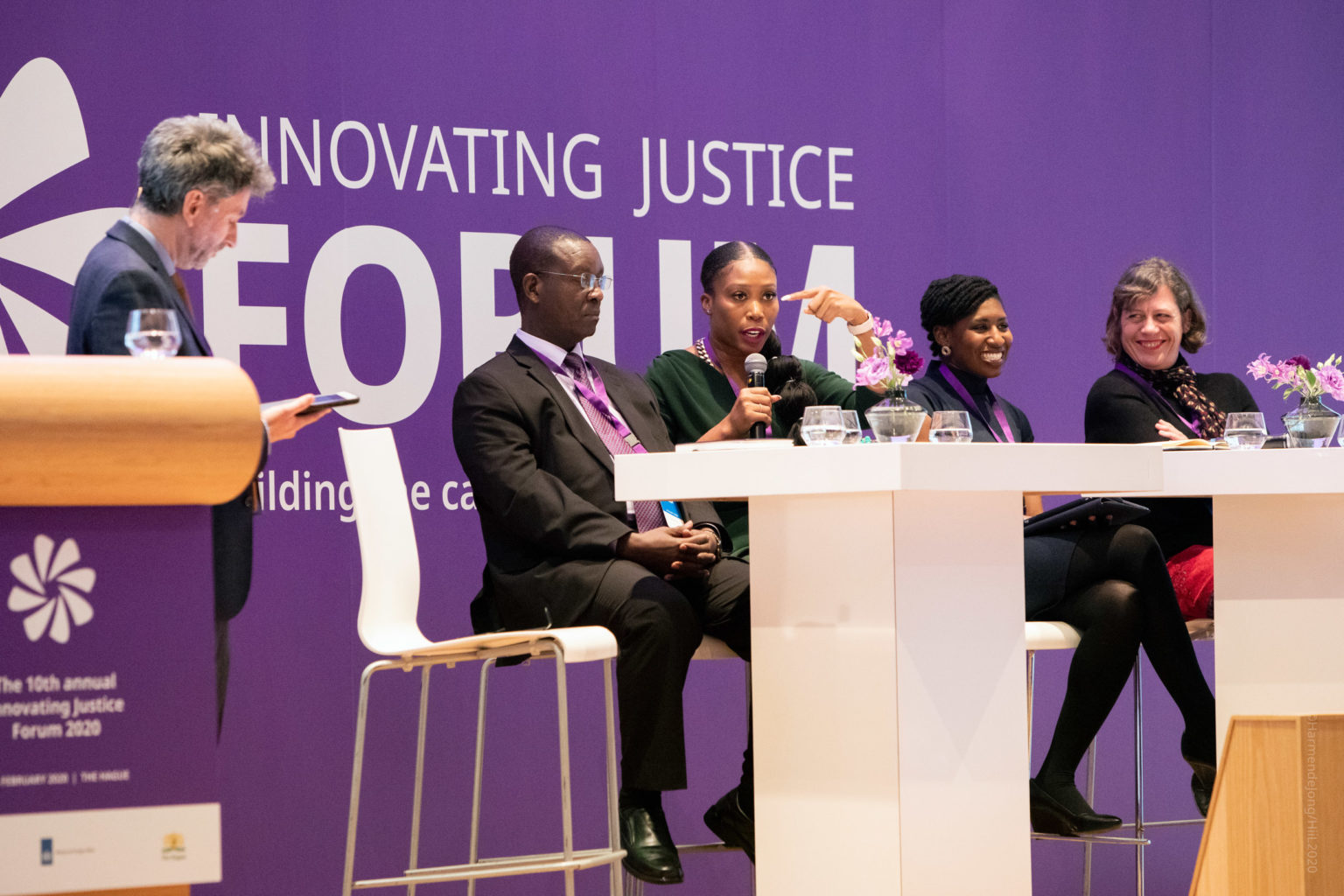
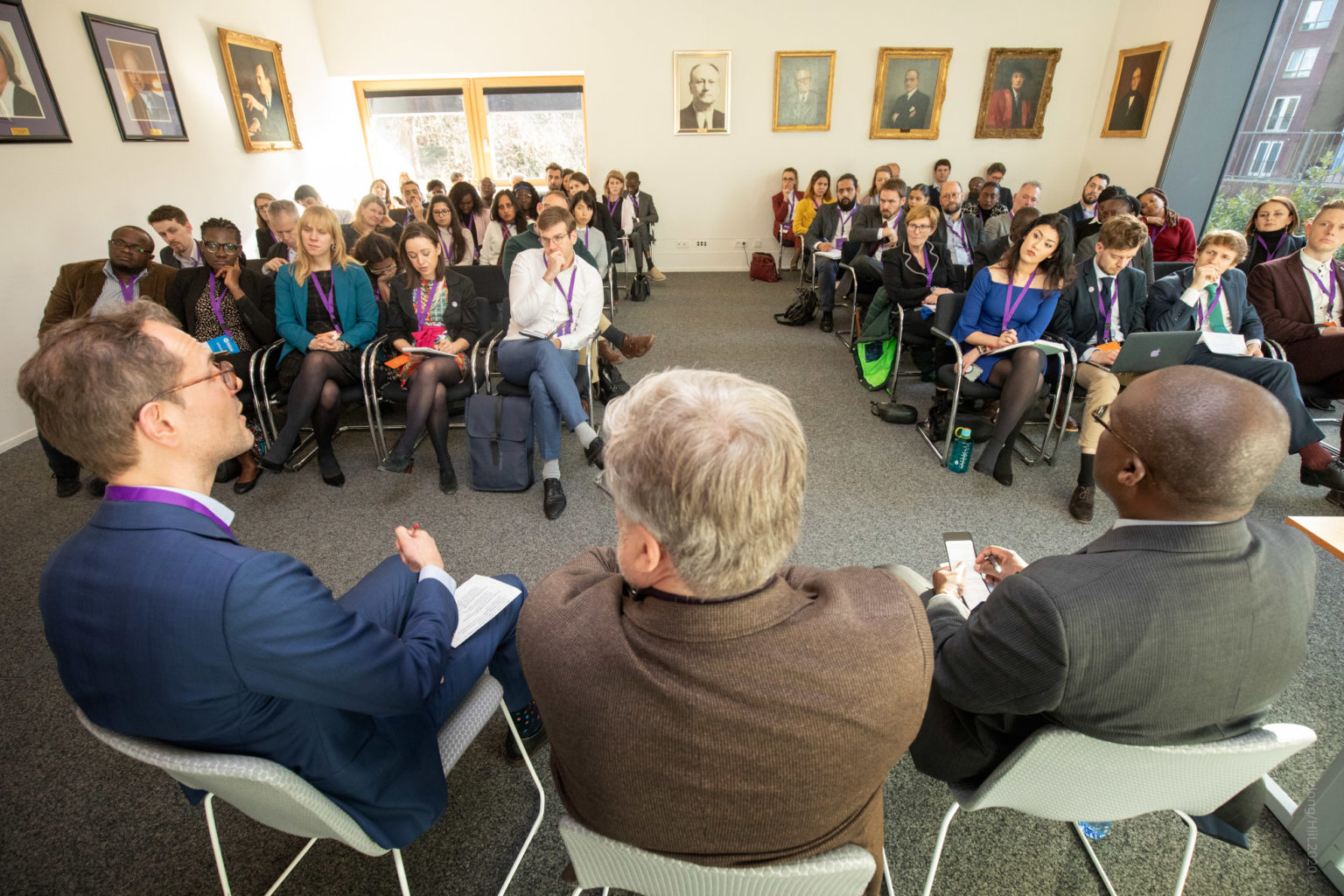
Why think in different SDG-silos? The SDGs has created a language with which different actors can talk to each other. Use it!
– Idsert Boersma
Finance modelling can be so fresh and innovative!
To reach a goal of 100% access to justice, the bottom-up/top-down paradigm needs a rethink (British politeness for throw it out). The way budgets are currently built compromises the opportunity for collaboration. We also know that SDG.16 is cross-cutting with many other fundable societal goals, such as opportunities for women. The new approach that emerged on Day 2 was to start budgeting processes from the needs of people and integrate consensual processes that build on areas of agreement. Trust from citizens is key and so growing leadership that conveys to people they are supported is an opportunity not to be missed.
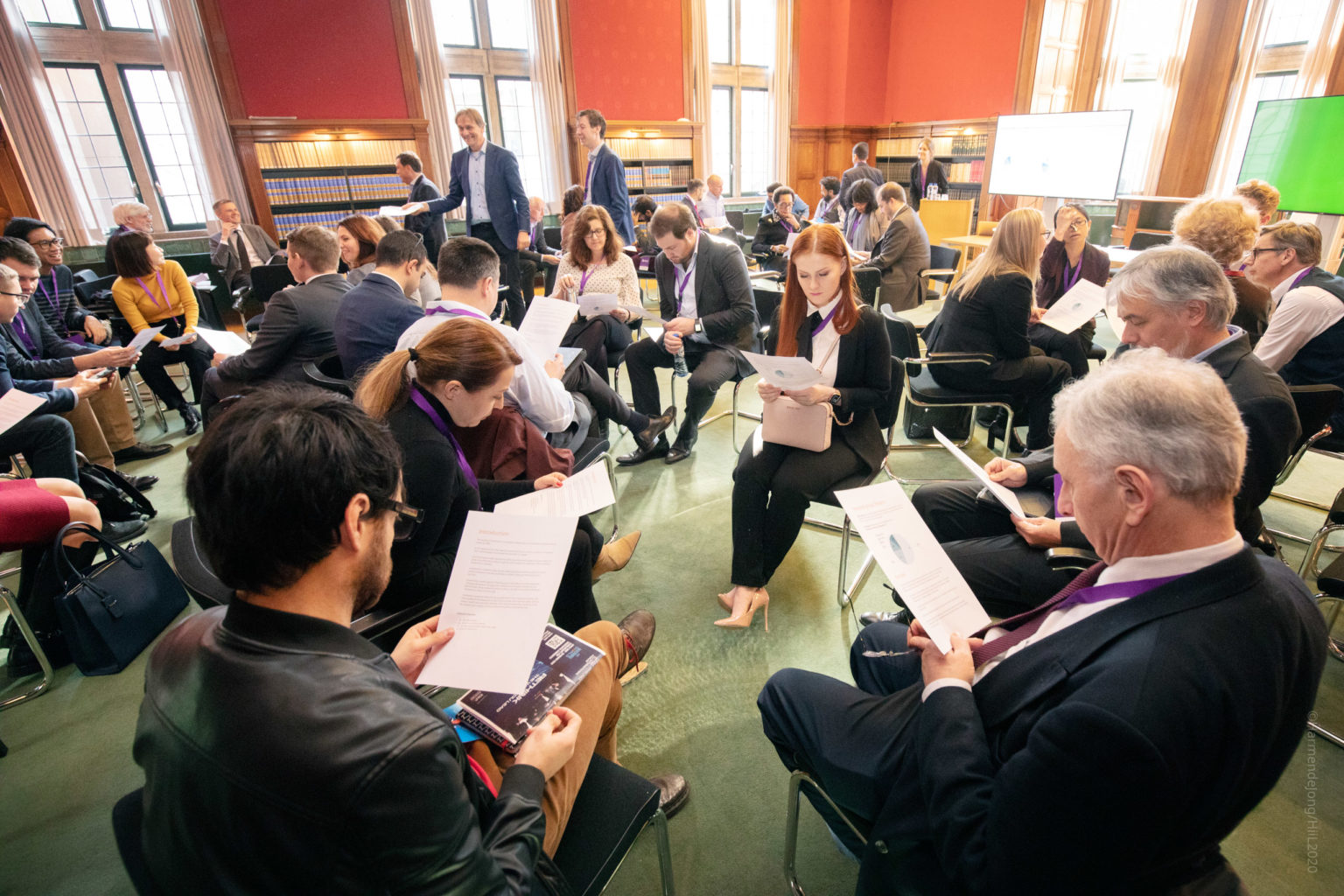
A decade of action for Justice for All
HiiL was proud to support the launch of the Shared Strategy for Justice for All at the IJF. With a decade of action to reach justice for all, the strategy sets priorities, provides direction and builds on the data and evidence in the Justice for All report launched in 2019.
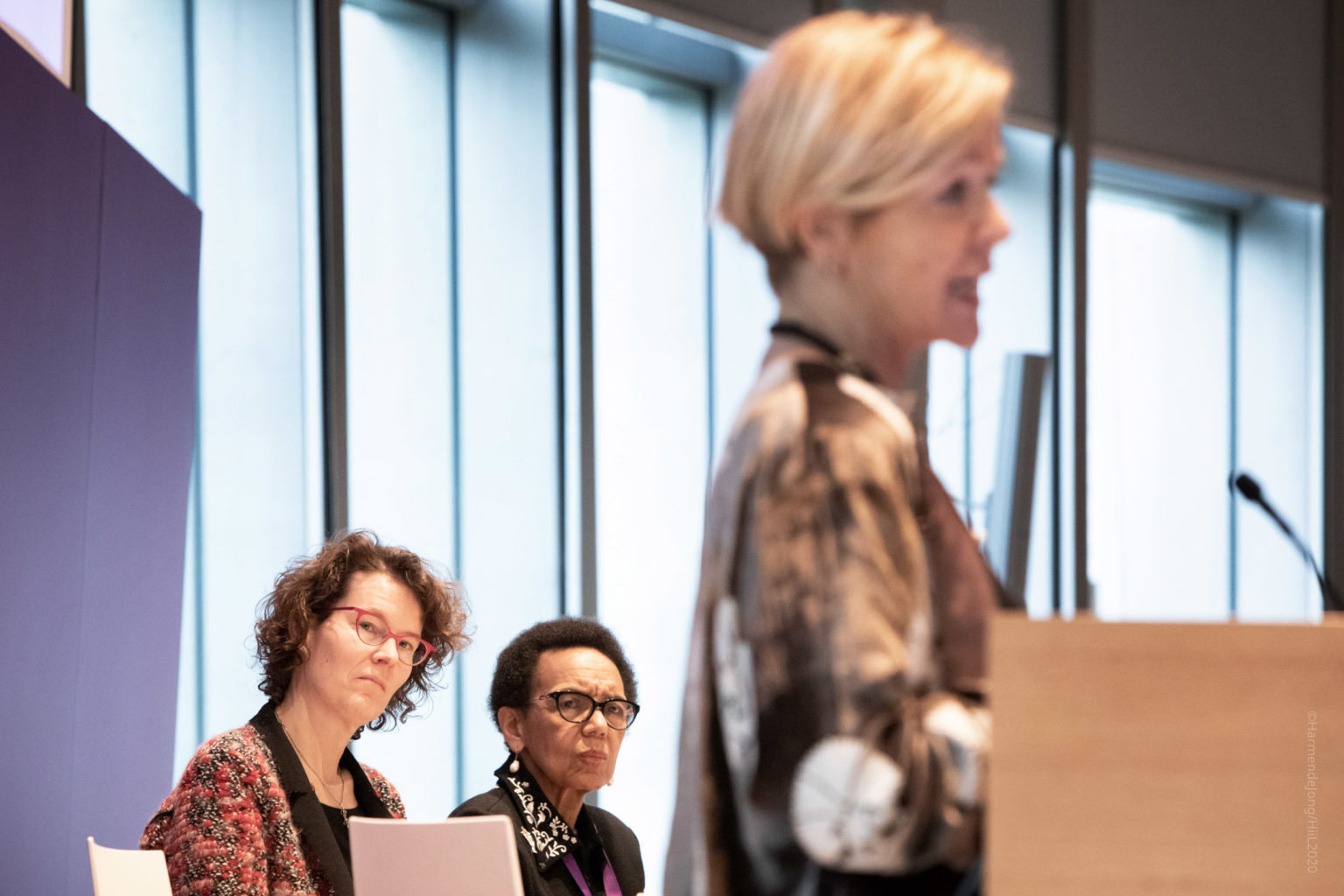
The launch was facilitated by three fierce justice advocates: Liv Tørres, the director of the Pathfinders for Peaceful, Just and Inclusive Societies, Allyson Maynard Gibson QC, Task Force member and Maaike de Langen, Head of Research for the Task Force on Justice. Together they emphasised the need for international cooperation to support national action. “Go alone, and you will go faster. Go together, and you will go further,” said Maaike de Langen, quoting an African proverb.
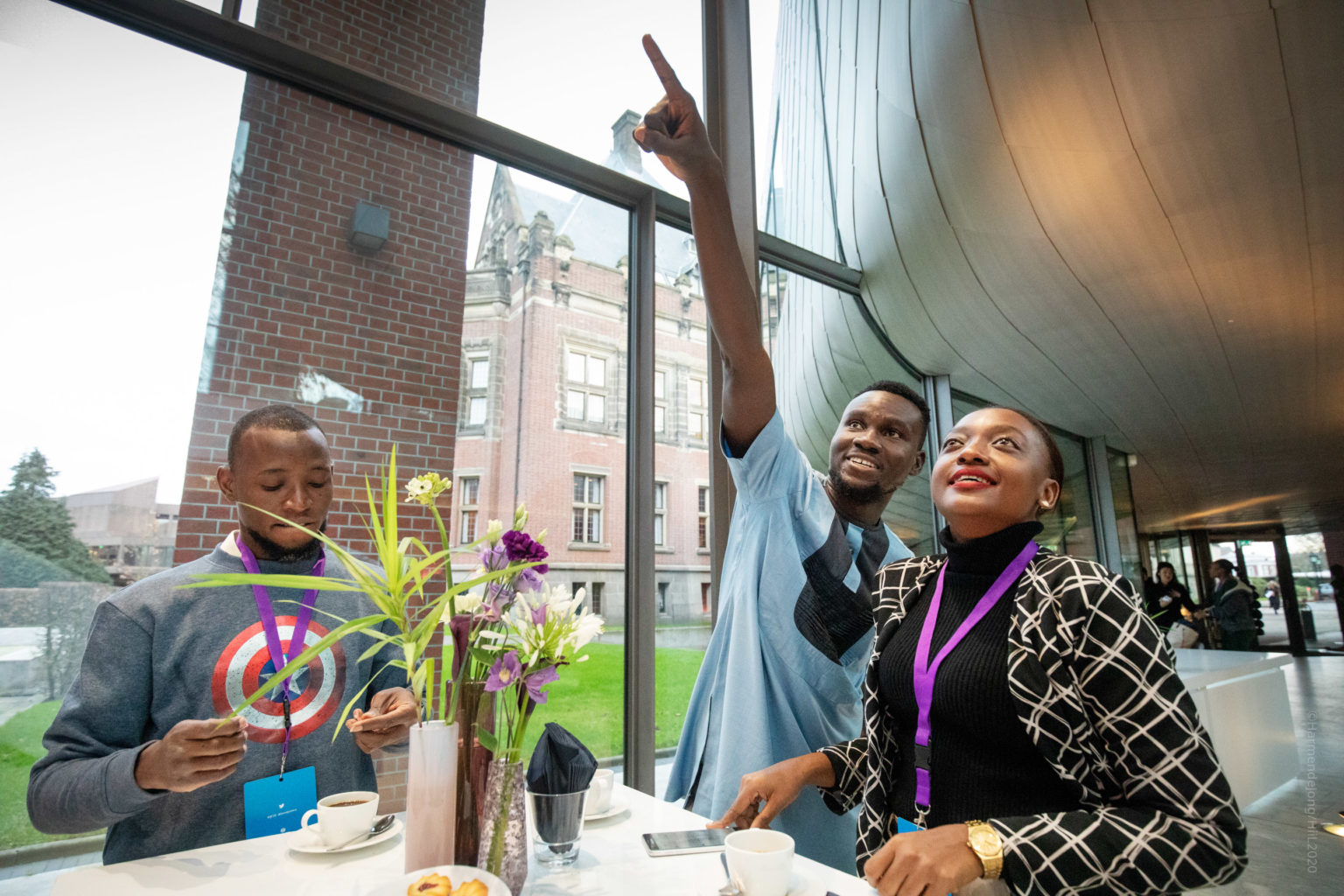
Don´ t look for money, but for what you want to acheive together.
-Albert Bonkenstijn, Dutch Fund for Climate and Development
Insights and evidence financing universal justice care
Maurits Barendrecht, the Director of Research at HiiL presented the yet to be published, Charging for Justice report. The report seeks to bring together insights on how to finance the solutions to close the justice gap. In a way that everybody gains: citizens, justice workers, courts, lawyers, volunteers, investors and providers of game-changing services. Ambitious? Yes.
People want solutions, help reaching out to the other party, fairness, to be listened to, and an end to the conflict, sometimes retribution, but mostly peace of mind. So why do we ¨sell¨ citizens what they do not ask for? The solution is to use evidence and justice needs data and shift the focus to outcomes. Outcomes that deliver peace and justice.
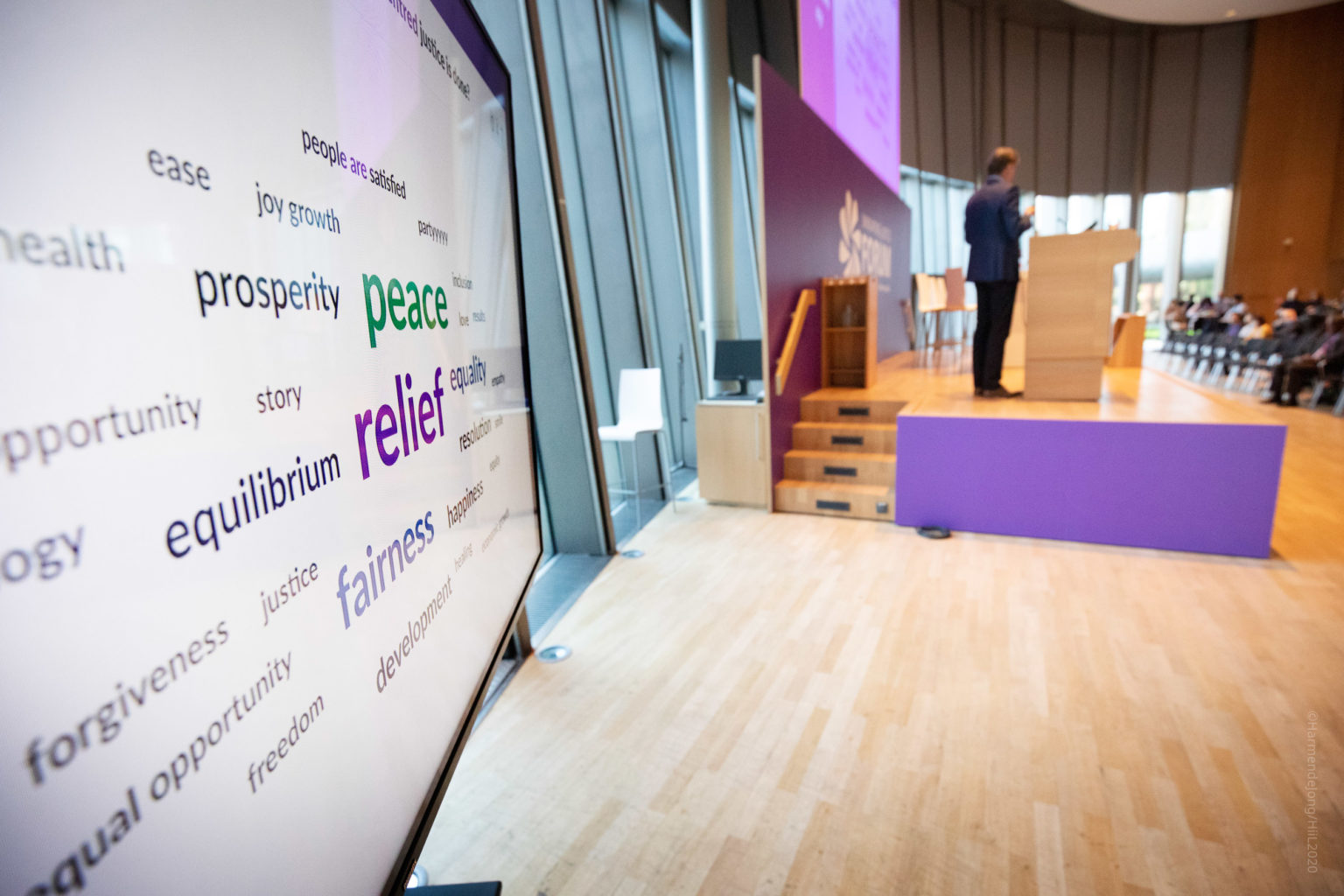
Upfront court fees and hourly lawyer fees are a stupid way to charge money.
Maurits Barendrecht, Director of Research at HiiL
Safeguarding the third branch
Everyone working in justice agrees on the importance of safeguarding core funding for courts and lawyers. Justice for families, land issues or crime is often a government service. Since we need innovative courts, new courts, new ways to regulate employment to meet demand, innovation should be able to enter the mandatory system.
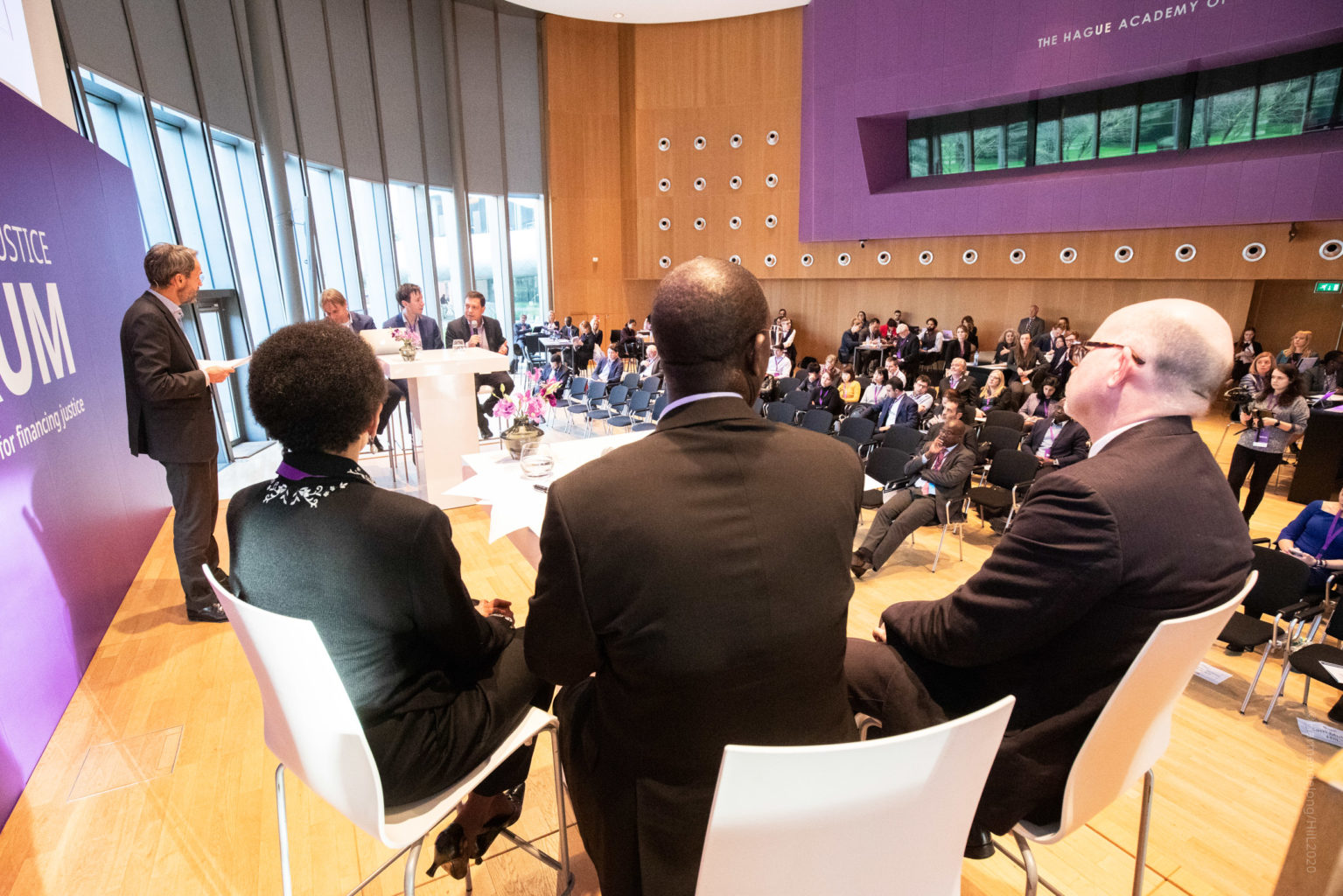
Highlights from the upcoming SDG.16 trend report
- Setting an inspiring goal of 100% access to justice for the most urgent and frequent justice problems. As the world has done for health, education and water.
- Safeguarding core funding for the broad social goals of the justice system, followed by introducing smart fees: increasing contributions by beneficiaries and government agencies for effective services, whilst decreasing general subsidies.
- Allowing justice sector organisations to reinvest extra revenues.
- Regulatory space for developing well-defined, scalable, financially sustainable services for particular target groups. Courts, other current providers of services, and innovative newcomers should be allowed to develop gamechangers.
- Attracting private and public investment into new services, such that they can become the default for particular categories of disputes and crimes. Ensuring these services are outcome-focused, evidence-based, scalable and financially sustainable.
- Focusing on local delivery of solutions for the most urgent and frequent justice problems. Gradually delivering a basic package that is free at the point of service.
- Supporting local delivery by world-class know-how. Investing in basic technologies that deliver fair outcomes and can be used worldwide,.
The new SDG16 trend report, Charging for Justice looks closely at four game-changers for delivering high-quality, basic justice in sustainable business models. Sign up here and you will receive the report once published in the coming weeks.
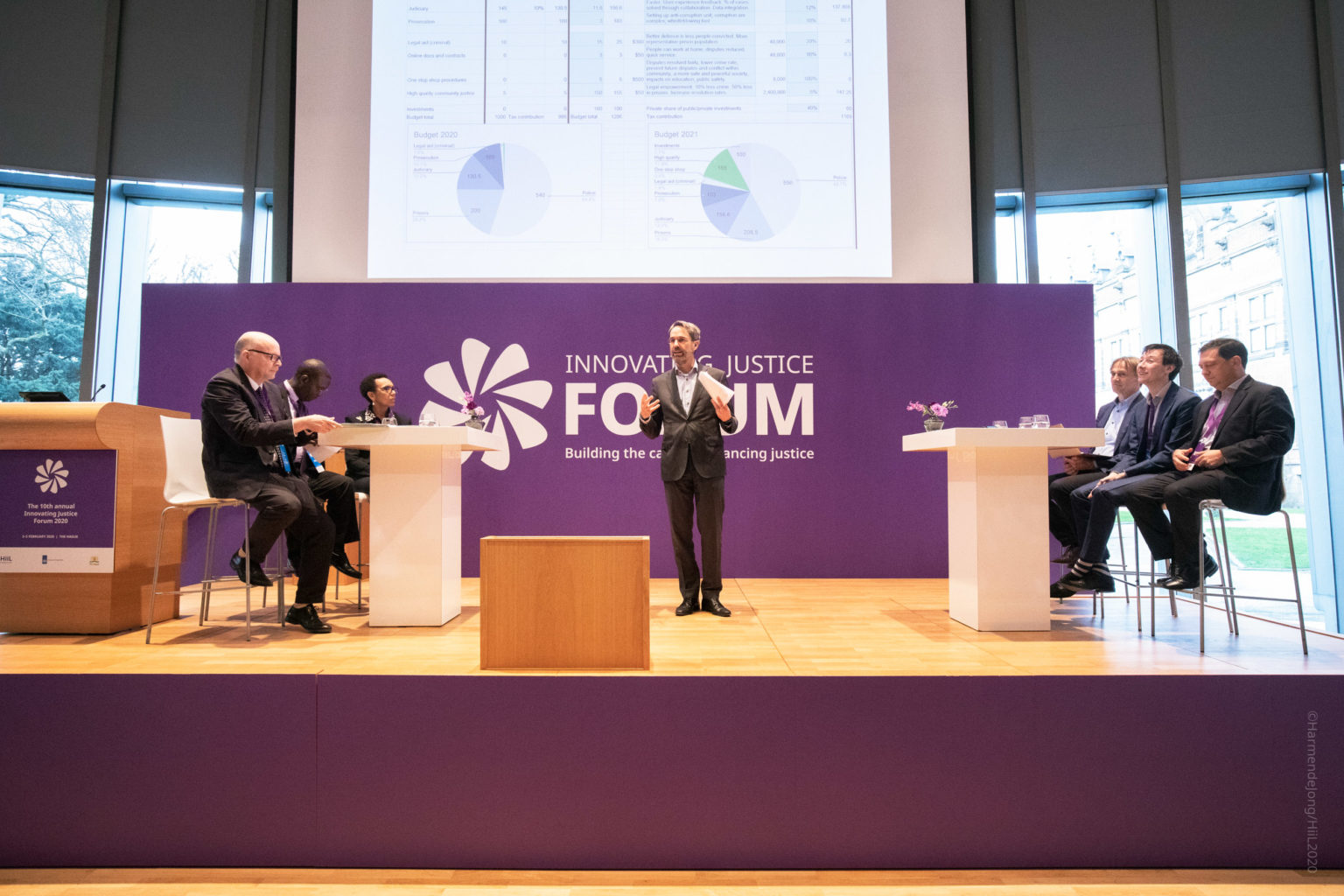
A national justice budget that delivers justice for all
Justice budgets are more often negotiated, rather than designed. But that is exactly what happened at the IJF. We used the steaming brainpower in the room to design an outcomes-focused (people-centred) justice budget. The challenge is funding the right services that deliver on peoples needs in a sustainable way. Generally, funding for justice has fallen both in national budgets and development aid. Far from exacerbating existing frustrations with budget processes, by opening it up we discovered it is possible to use the budget mechanism to advance collaboration between demands.
An outcomes-based approach to budgeting reveals areas of overlap which allows for greater institutional collaboration. What emerged was the need for greater public involvement and greater transparency in the process.
Proven justice innovations
We invited four game-changing innovators to share their stories and successes: what does it look like when an outcome-focused, high-quality solution breaks through?
War is the result of lack of access to justice.
– Soreiba Daffae, Crimesync and Innovating Justice Challenge winner 2019
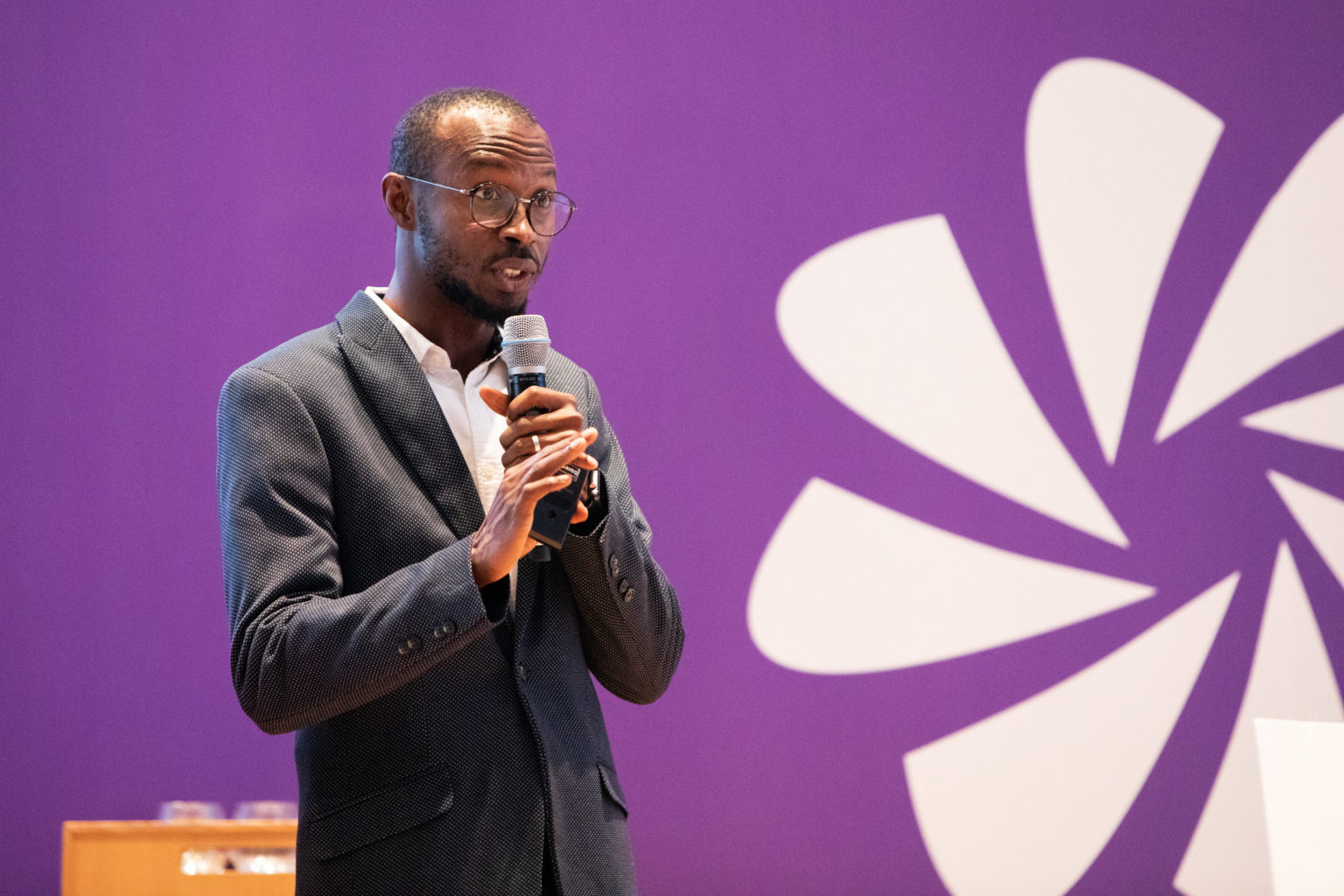
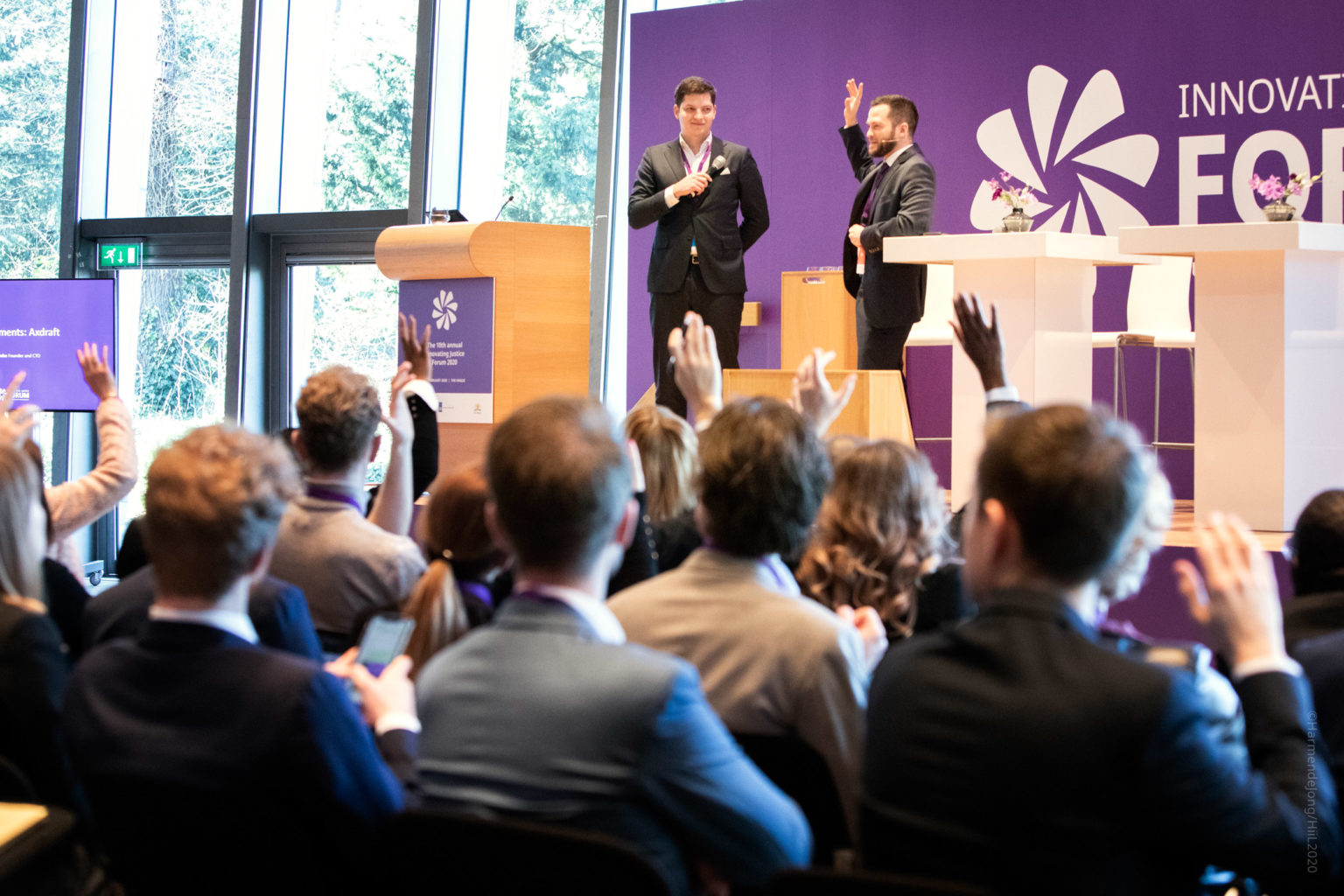
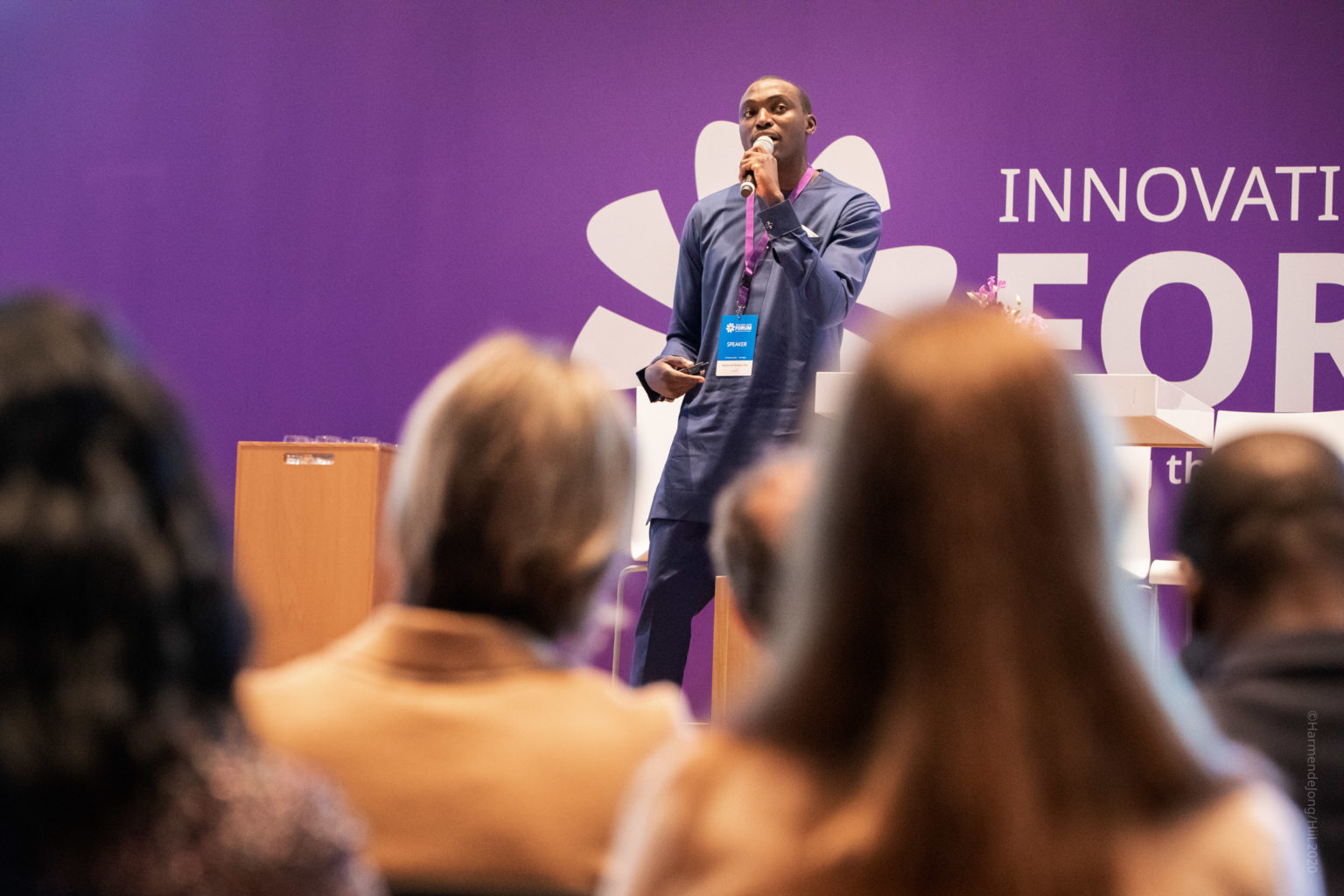
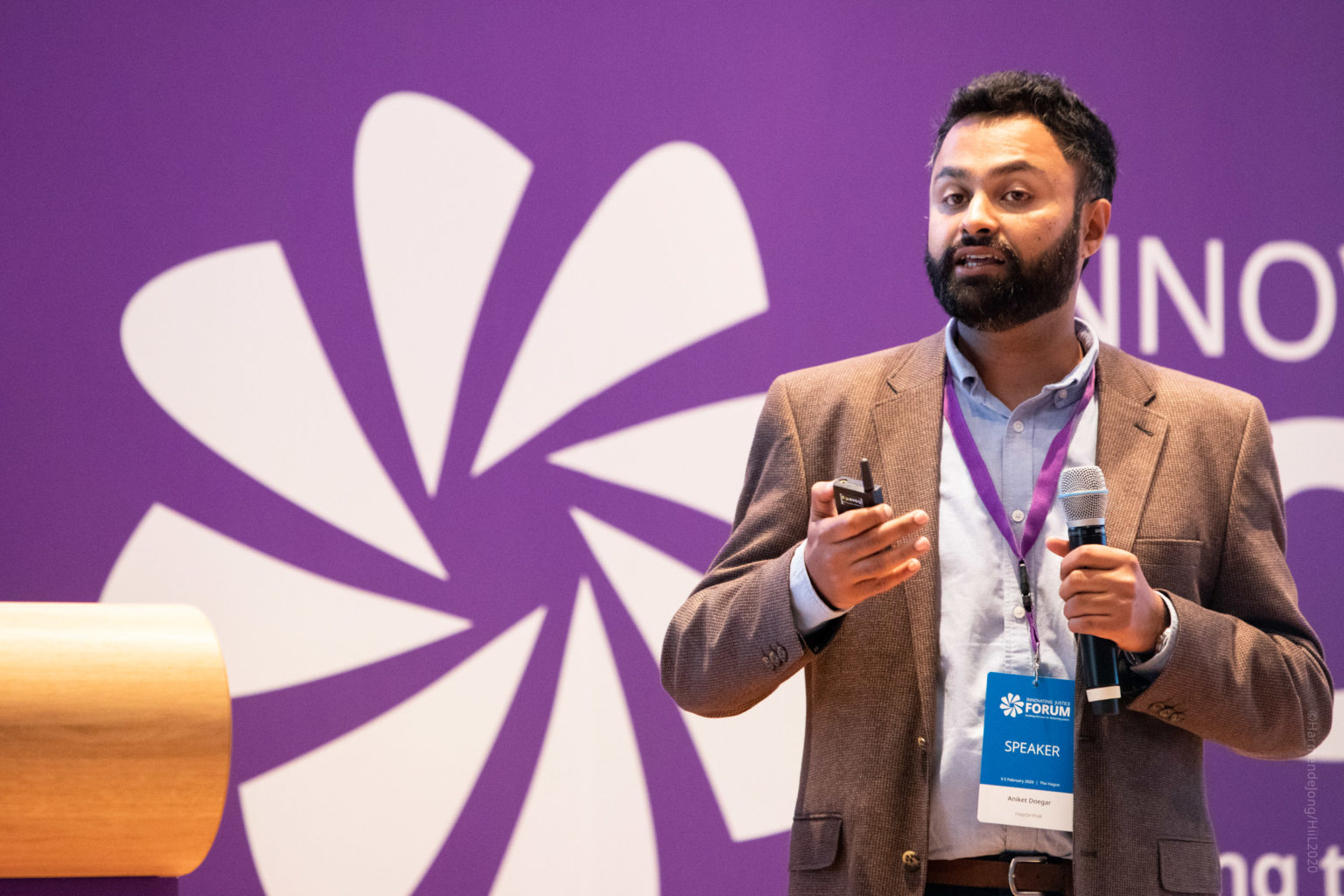
These four proven innovations were introduced by Tom Dunn of Clifford Chance with whom HiiL has global, multi-year partnership to promote equal access to justice for all. For more information on these justice innovations please contact Ronald Lenz: Ronald.Lenz@hiil.org
Are you the justice leader we need?
The IJF was also the occasion for the Dutch premiere of a unique screening. ¨The Justice Leaders¨ is a justice documentary that follows the lives of two courageous people striving for change in their country.
The idea for the film started with the question of what kind of leaders are needed to transform the justice system and deliver justice to all citizens? And also, what of the personal stakes when you choose to be a justice leader?
Five years ago, HiiL brought together eight justice leaders from all over the world, they formed The Justice Leadership Group. Each was leading or had led transformative justice programmes in their respecrtive countries. In a closed room we asked them the question: what is justice leadership?
What came out was that justice leadership is lonely. These positions are often isolating, the stakes are high. There are many vested interests to navigate, you have forces working against you at different levels and temptations you need to avoid. You are always being criticized, you have a strong moral compass to maintain.
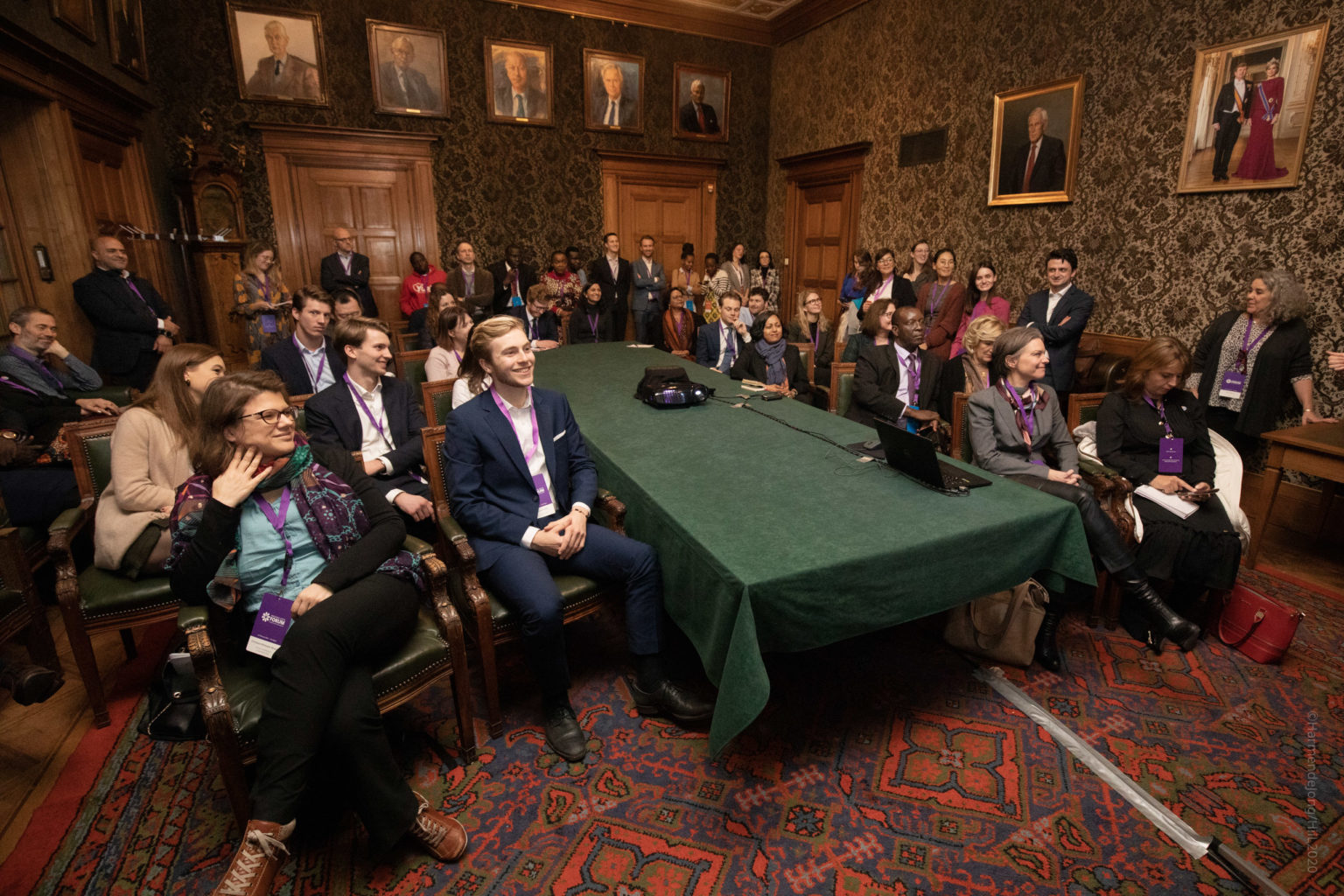
In case you have not seen The Justice Leaders in either Kampala, The Hague or London, I won´t give much more away relating to the documentary. It will be coming to a city near you soon enough. What is worth stressing is this: the time to reframe the conversation about justice leadership is now. The challenge we have ahead is surmountable with courage, wits and a passion for everyday justice and peace from unlikely people. What kind of justice leader will you be?
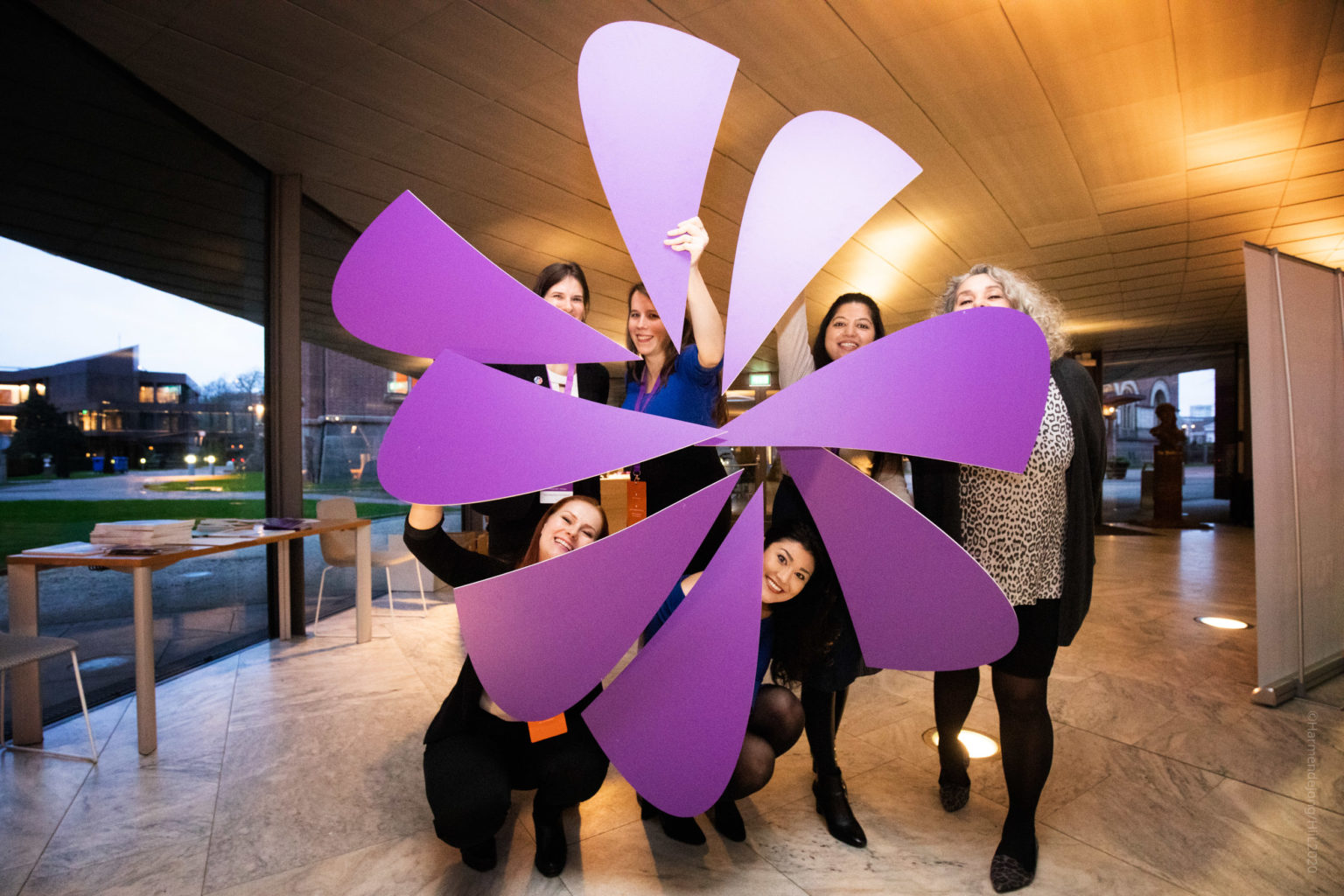
A quick word of thanks to my brilliant colleagues (pictured below) who worked hard to bring this event to life.
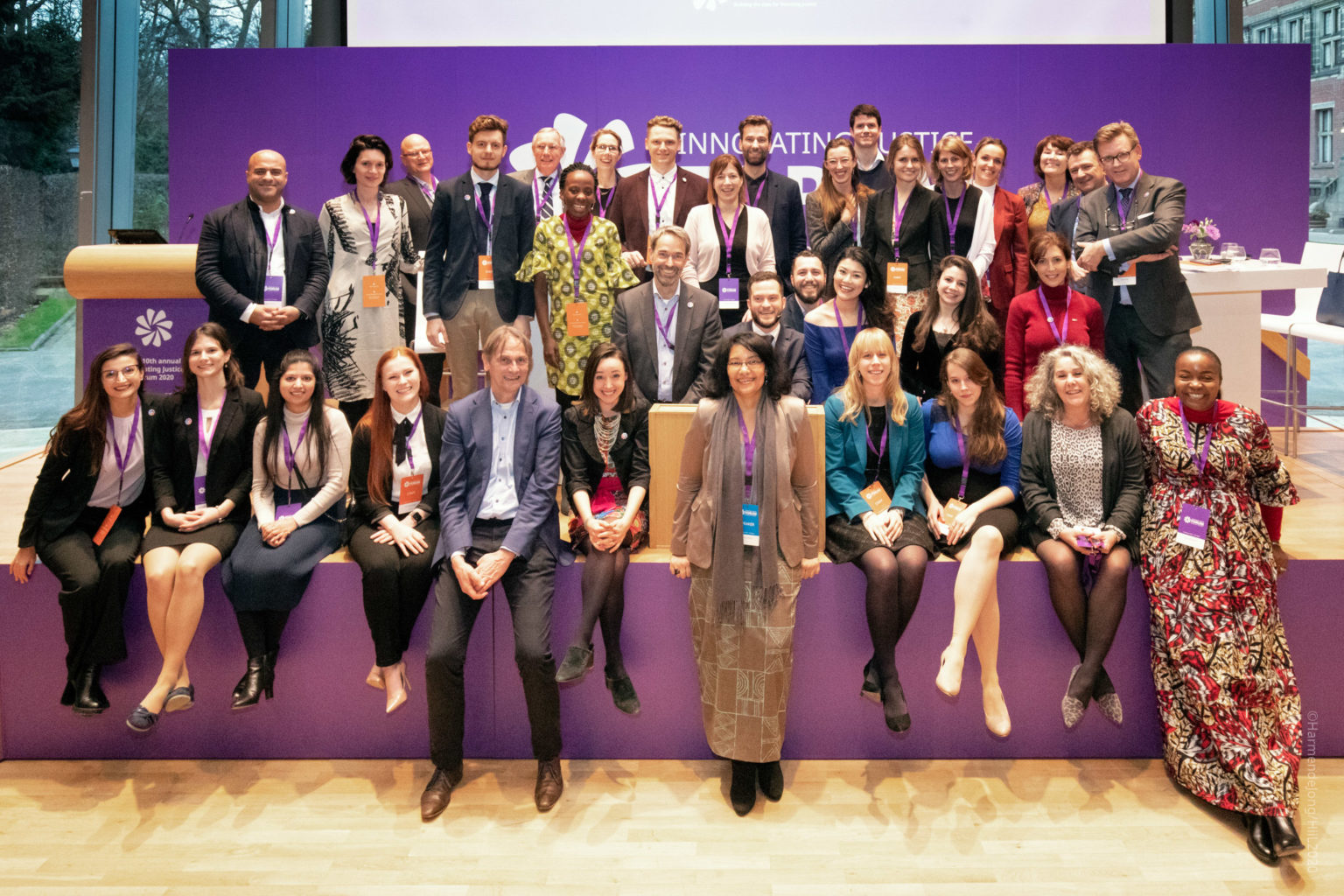
A never-ending-flow of thanks to all the participants (most pictured below) for helping further our understanding on how to finance universal access to people-centred justice. Together we have chosen to take up the challenge to bridge the gap that currently exists and build a more inclusive, just and peaceful world.
